|
Ford Victory Pictorial
Ford WWII Production Database
Ford M4A3 Sherman Tank Photos Ford
Highland Park Plant Photos
Ford Motor Car
Company in World War Two
Dearborn, MI
1903-Present
This page updated on
6-7-2025.
An Overview
Ford Motor Company is probably best known for its production of 6,790
B-24 Bombers at the US government financed and owned plant at Willow
Run, MI. Constructing the plant, finding and training the
required people, and acquiring the tooling and equipment to build the
aircraft consumed a considerable amount of Ford's resources and time
during the war. Lost in the B-24 story is the number and diversity of
other war items Ford built that contributed to the success of the US war
effort. Below I have attempted to capture the entire breadth of
what the Ford Motor Company produced during World War Two. This starts with the
JB-2 Loon, the first US "cruise missile," which was a copy of the German
V-1 Buzz Bomb.
Also of significant note is the number and location of Ford's plants, not
only in the US but overseas as well. While several of the plants
were sold or loaned to the US government for war production, Ford's 42
domestic plants continued producing war goods. Some of these were
small "village" plants that produced many important parts for the larger
products.
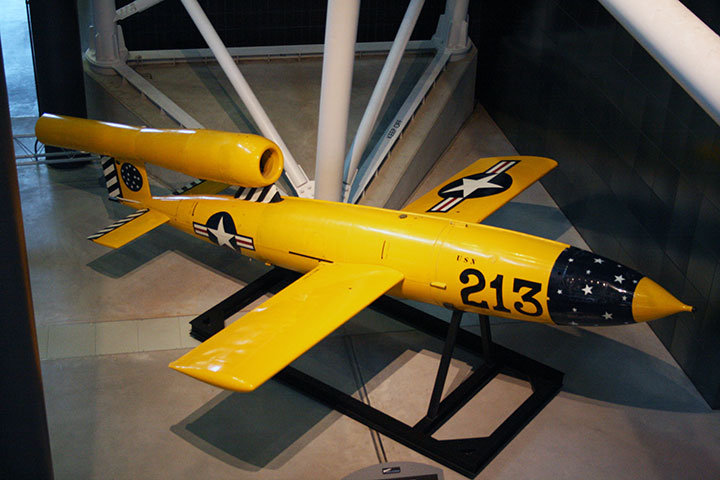
In the years after World War One and leading up to World War Two, the
United States military establishment ignored the work of US rocket
inventor Robert Goddard, putting the defense of the country at risk in
doing so. While they were ignoring Robert Goddard, now proclaimed
the father of American rocketry, the German military was in the process
of funding its rocket scientists, resulting in the Vengeance Weapons,
the V-1, and V-2. The United States was therefore put in the
position of having to copy captured German V-1s as they became
available. The result was the JB-2 Loon as seen above.
Republic Aviation had the contract for the airframe, but Ford
Motor Company was chosen to produce the pulse jet engine. Check my Willys-Overland
page to see the significant contribution it made to this project when
Republic Aviation subcontracted all of the airframe
work to it. Author's Photo.
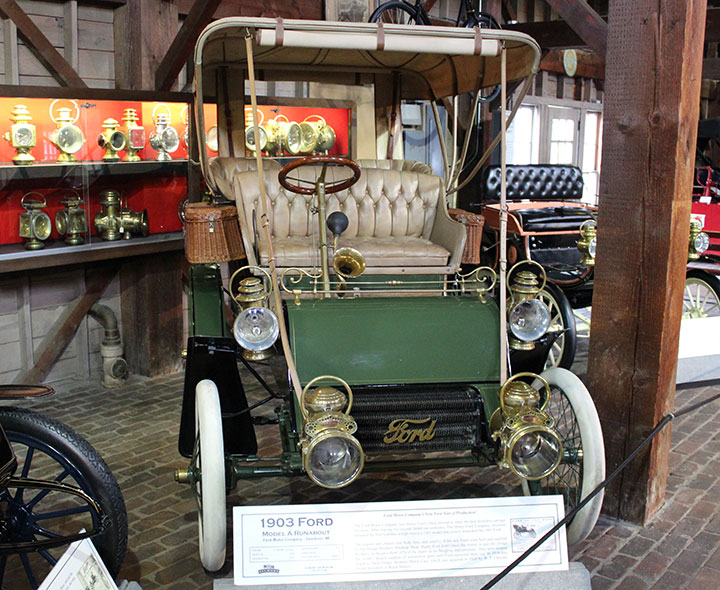
This 1903 Ford Model A runabout had its
engine and chassis supplied by the Dodge Brothers machine shop, setting
into motion two names in the US auto industry that still exist. This
was Henry Ford's third and lasting attempt to start a car company, the
second one became Cadillac after he left. Author's photo from the
Gilmore Car Museum.

Seven Ford plants won the Army-Navy "E"
Award a total of 14 times during World War Two.
|
Ford Motor Car
Company Plants that won the Army-Navy "E" for Excellence Award
during WWII |
|
Aircraft Engine Plant, Dearborn, MI on 3-12-1943 |
1 |
|
Glider Plant, Iron Mountain, MI |
3 |
|
Richmond Tank and Motor Vehicle Depot, Richmond, CA |
4 |
|
Somerville Branch, Somerville, MA |
2 |
| Twin
City Branch, St. Paul, MN |
1 |
|
Willow Run Bomber Plant, Ypsilanti, MI |
1 |
|
Ypsilanti Plant, Ypsilanti, MI |
3 |
|
Total |
14 |
Ford Motor Company World War Two Production Statistics:
Aviation Related - (56,870) Pratt & Whitney R-2800 Radial Aircraft
Engines, (6,790) B-24 Liberator
Bombers, (1,894) B-24 Knock Down Kits*, (75,166) P-1 Aircraft
Generators, (11,224) R-1 Aircraft Generators, (4,314) CG-4A Gliders, (87) 14A Gliders, (17,008) Aircraft Drop
Fuel Tanks, (2,501) Pulse Jet Engines,
(52,278) Turbo Superchargers, (5,475) Aircraft Rate of Climb Indicators
*Knock Down Kits - These
went to the Douglas Plant in Tulsa, OK and Consolidated Plant in Fort
Worth, TX for final assembly.
Vehicles - (12,782)
Amphibious Jeeps (Seeps), (282,354) Jeeps, (250) T17 Armored Cars,
(8,410) M-8 Armored Cars, (3,791) M-20 Armored Cars, (19,520) British
Axles, (26,086) British Engines, (1,690) M4A3 Sherman Tanks, (1,038) M10A1
Tank Destroyers, (26,727) Tank Engines, (5,475) Tank Gun Mounts,
(13,893) Universal (Bren Gun) Carriers, (7,053) GTBC 1-1/2 ton, 4x4 Bomb Service Trucks,
(77,915) G8T 2-1/2 ton 4x2 Trucks,
(8,218) GTB 1-1/2 ton 4x4 Cargo Trucks (Burma Jeep), (42,676) Army/Navy
Cargo Trucks (Standard Product), (12,420) 1-1/2 Pick-up Trucks (Standard
Product), (10,476) 1942 Automobiles, (3,025 or 10,877) Ford designed
Moto-Tugs.
A note on tank engines:
Included in the total of 25,079 tank engines are 20,999 GAA, 3,688
GAF, 366 GAN and 26 GAY tank engines. The GAA was used in both the
Ford-built M4A3 tank built by Ford, Chrysler, and Fisher Body. It
was also used in the M10A1 tank destroyer built by Ford. The GAF
was used in the 2,202 T26E3/M26 Pershing tanks and the 185 T26E2/M45
105mm howitzer gun carriages. The GAN was used in the 250 T23
built by Chrysler at the Detroit tank arsenal.
A note on Jeeps:
The figure 282,354 includes 4,458 GP models with Ford engines and
277,896 GPW models with Willys engines.
Other - (802) M-7 Gun
Directors, (400) M-5
Gun Directors, (9,498) Squad Tents, (19,985) M34 and M34A1 Gun Mounts
for Sherman Tanks.
The numbers given above only
represent United States production. Foreign
production is listed on the Ford Database Page.
Editor's Note:
The information presented for Ford-built World War Two military production numbers was obtained from "Ford in the
Service of America: Mass Production for the Military During the
World Wars," by Timothy J. O'Callaghan published by McFarland and Co.
in 2009. This is an excellent book. Mr. O'Callaghan spent
considerable time researching Ford historical archives to tell the Ford
story during both World Wars. Production numbers above came from a
table that included three different ways the WWII production had been
tabulated: 1) Month by month production records from 1-1941
to 8-1945; 2) Fixed and Cost contracts from 1941 through
1945; 3) Flyer published September 1945.
Sometimes the numbers for a
particular product match between the three sources, and sometimes they
don't. I chose method "one," as this covers the war production that
ended with the termination of hostilities in August of 1945. In
other parts of the book, production numbers are given for individual
plants for particular products. As seen below, in several cases
where I have compared the two sets of numbers they do not reconcile. This is not unusual. I have found
conflicting or non-existent production numbers in many cases for many
of the companies presented on this website. The main thing to recognize is the vast scope
and large numbers of different products Ford
produced in the defense of the United States in World War Two.
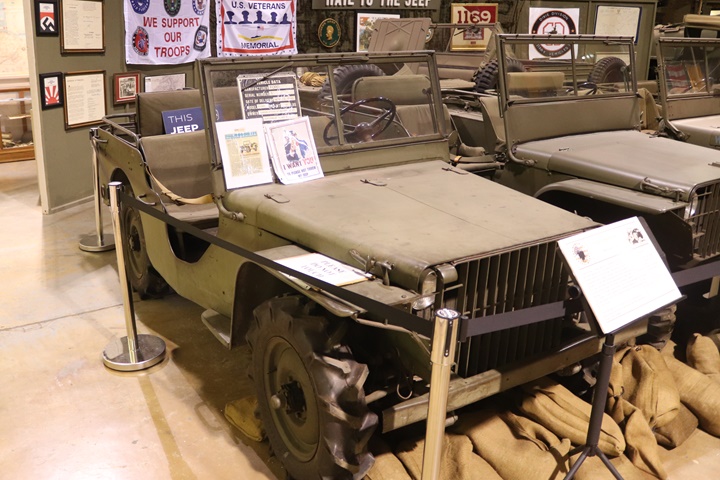
How cool is this? This is the original
prototype jeep that Ford built in 1940. It is the oldest Ford jeep in
existence, on display at the U.S. Veterans Memorial Museum
in Huntsville, AL. There are more photos and information in the
jeep section below. Author's photo added 2-27-2020.
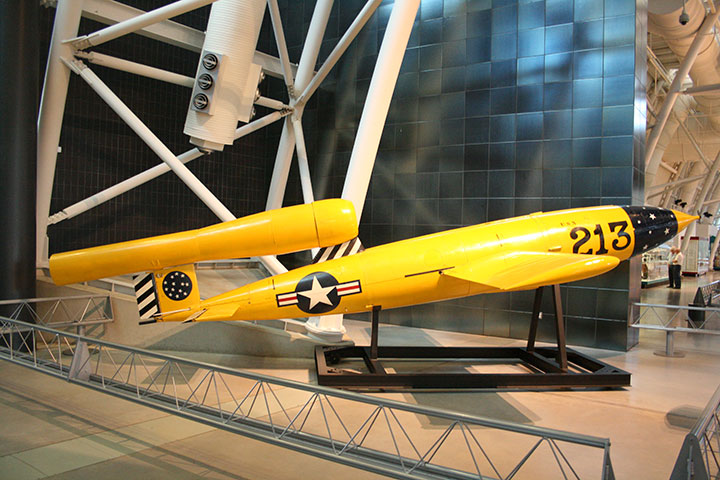
This JB -2 Loon is on display at the Udvar-Hazy Center in Virginia. Author's Photo.
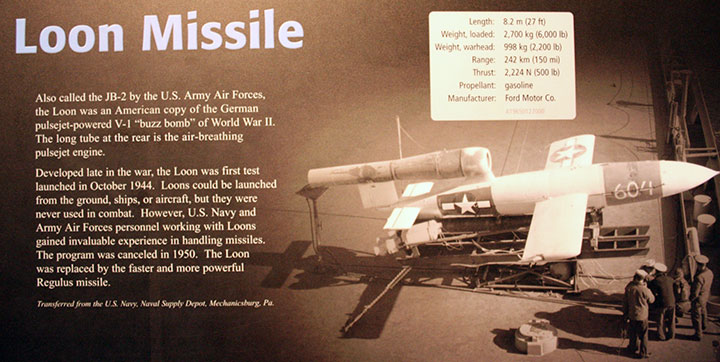
The Udvar-Hazy Center is in error or misleading in
its identification of Ford Motor as the manufacturer, as it only
produced the pulse engine. Author's Photo.
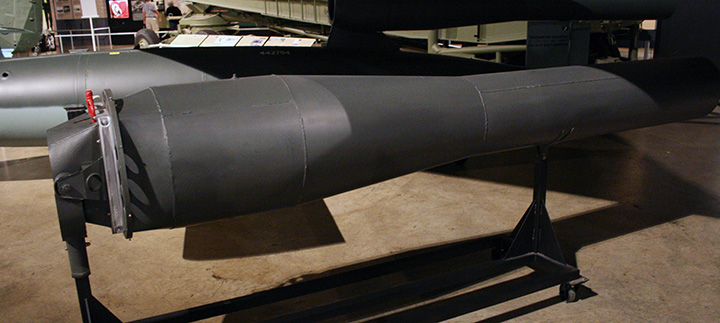
This Ford-built pulse jet engine is on display at the Air
Force Museum. Author's Photo.
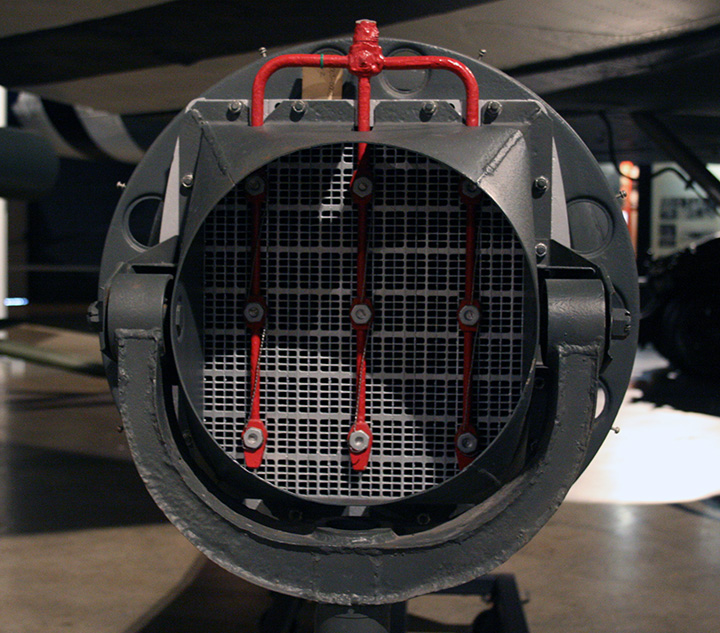
The red tubes are the fuel lines and injectors, which sprayed the fuel
into the combustion chamber. Author's Photo.
Ford-Built World War Two Ground Vehicles:
Below are photos of the many different types of vehicles Ford
manufactured for the war effort.
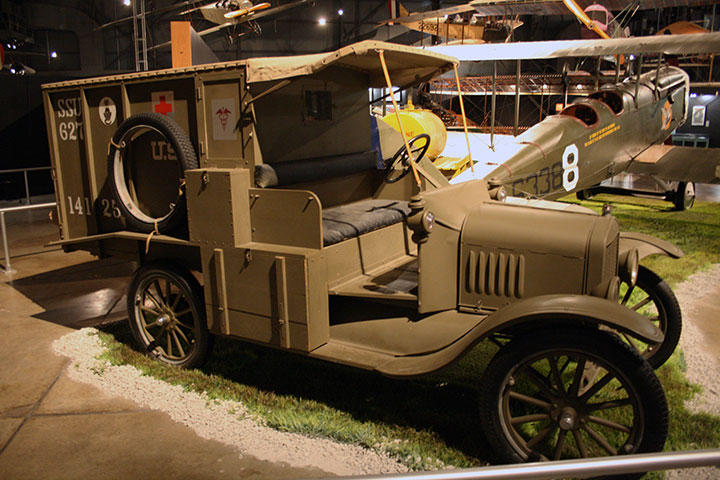
During World War One, the Model T was high tech. Ford shipped 4,362
ambulance models like this one to Europe during that conflict.
This was the predecessor to the many trucks it supplied during World War
Two, as
seen at the US Air Force Museum. Author's Photo.
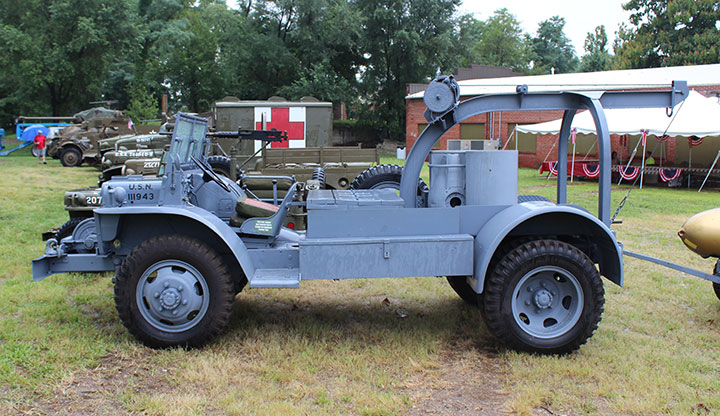
Seen here at the 2014 Indiana Military Museum's Salute to World War Two Veteran's
is a 1943 Ford 1-1/2 ton GTBC 4x4 bomb truck. Author's photo added
9-1-2014.
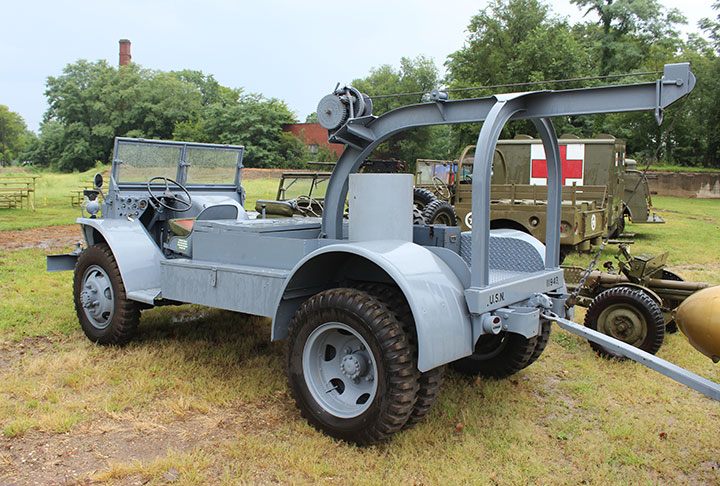
7,053 GTBCs were built, 4,292 at
the Edgewater, NJ plant and 2,750 built in Louisville, KY. These two
production numbers leave eleven units unaccounted for.
Author's photo added 9-1-2014.
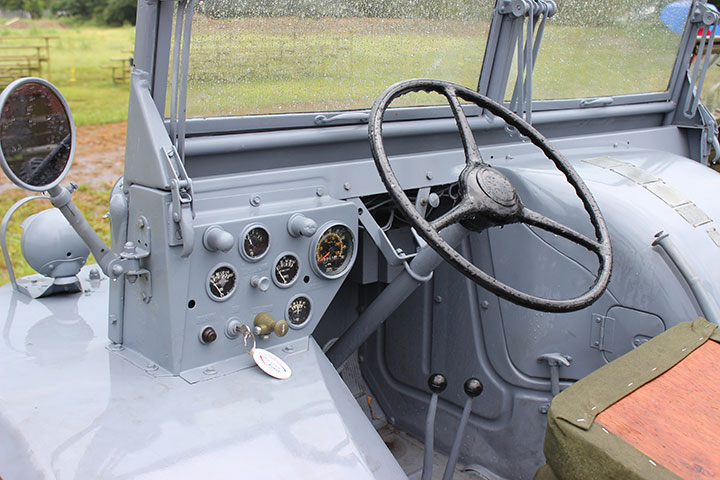
Author's photo added 9-1-2014.
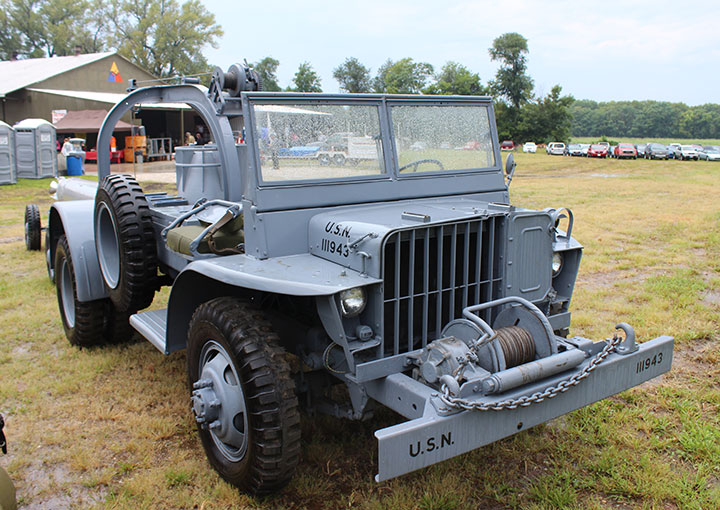
Author's photo added 9-1-2014.
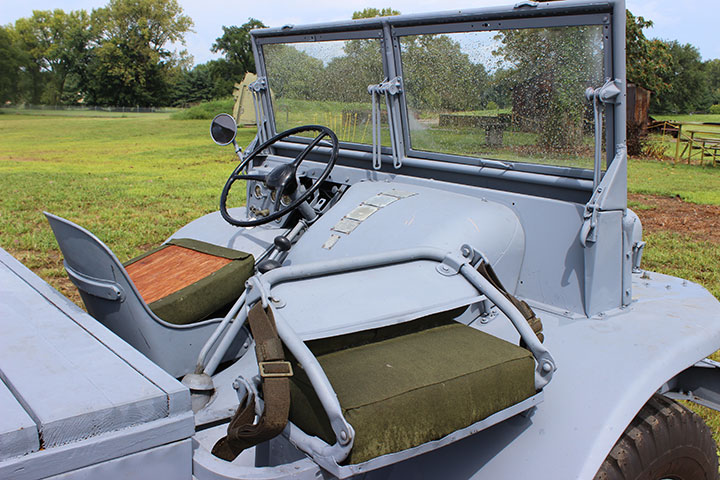
Author's photo added 9-1-2014.
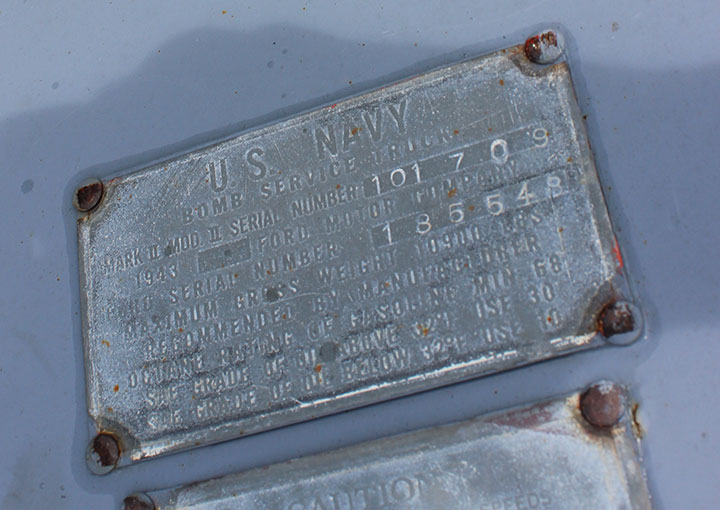
In US Navy parlance this is a Mark II, Model II with serial number
101709. The Ford serial number is 185548. The maximum gross
weight is 10,900 lbs. Author's photo added 9-1-2014.
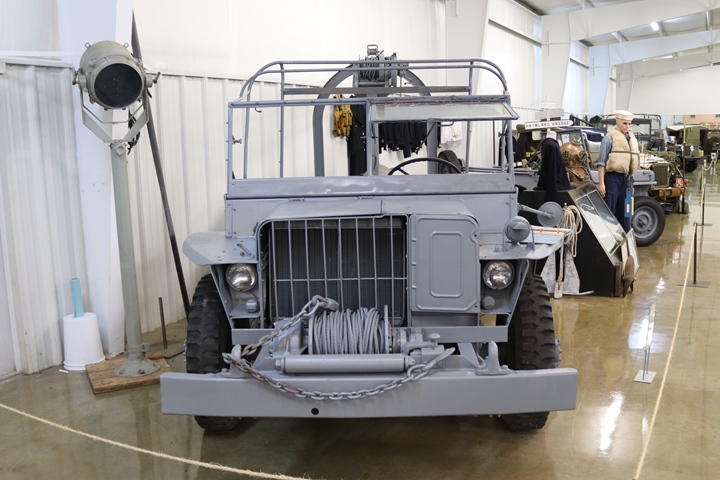
This Ford bomb truck is on display at the Sam Werner Military Museum in Monteagle, TN. Author's photo added 2-27-2020.
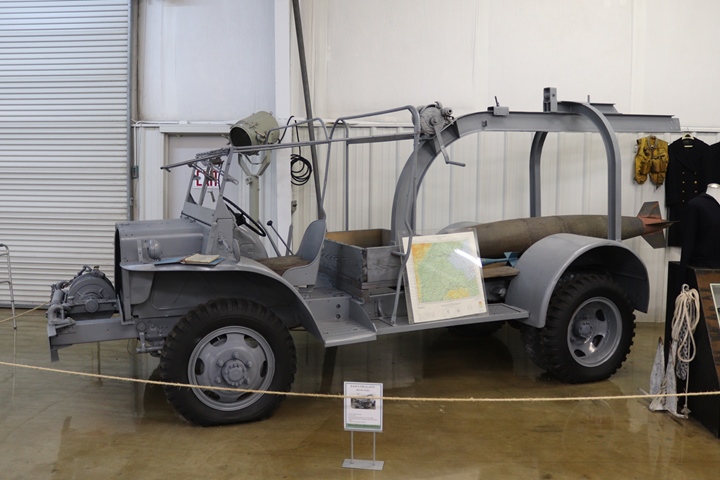
Author's photo added 2-27-2020.
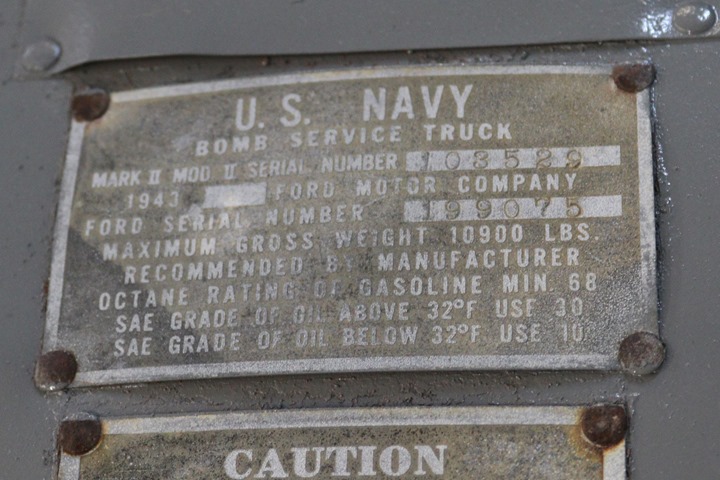
Author's photo added 2-27-2020.
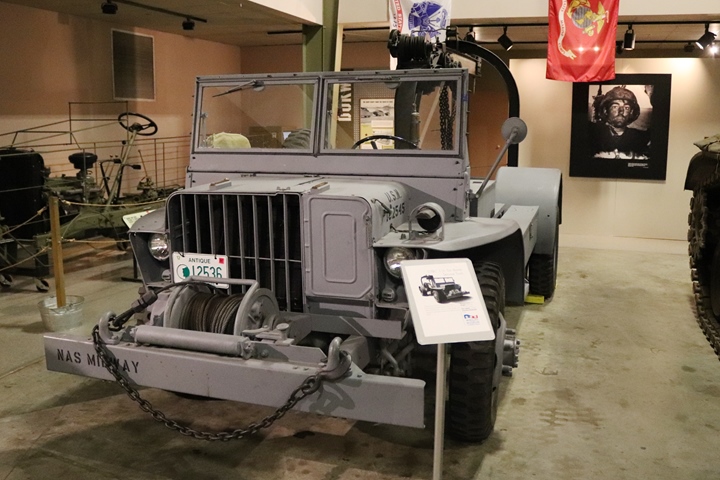
This Ford bomb service truck is on display
at the Wright Museum of World War II in Wolfeboro, NH.
Author's photo added 4-20-2020.
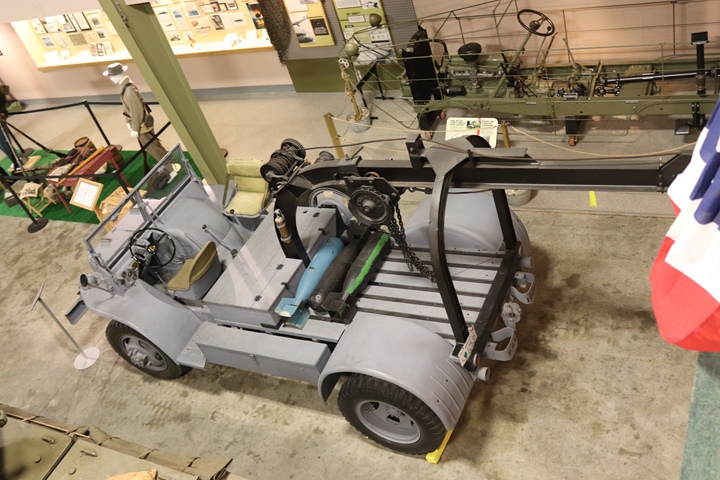
This photo from the balcony of the
museum provides a nice view down into the vehicle.
Author's photo added 4-20-2020.
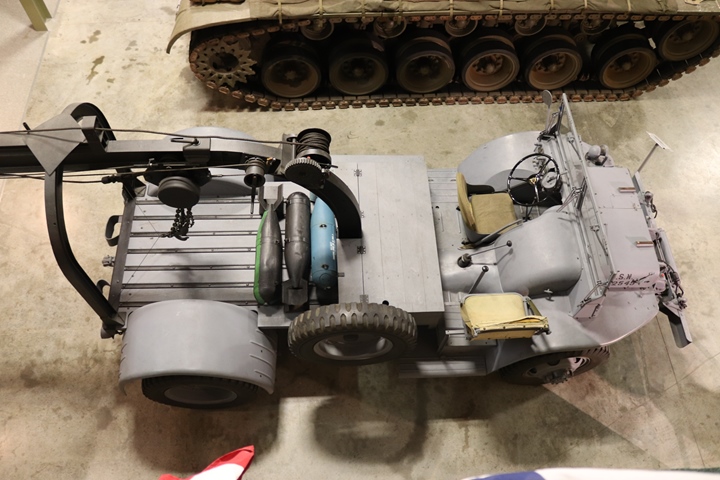
This overhead photo provides another
view of the vehicle and how the bombs were transported.
Author's photo added 4-20-2020.

This GBT navy bomb truck is part of the
collection of the National Museum of Naval Aviation in Pensacola, FL.
Author's photo added 6-7-2025.
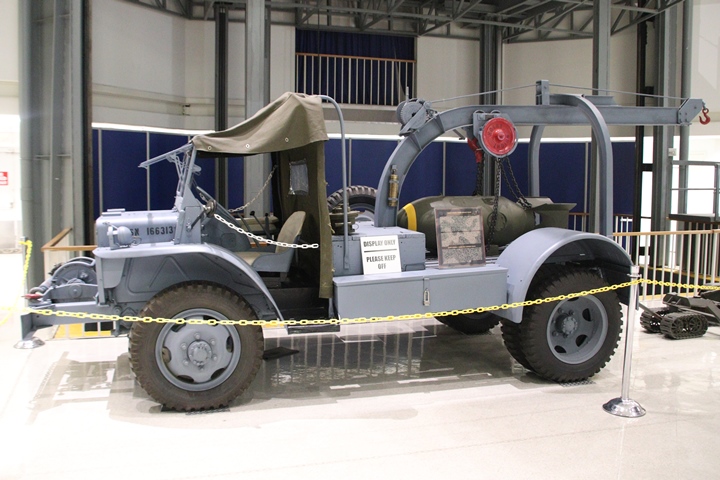
Author's photo added 6-7-2025.
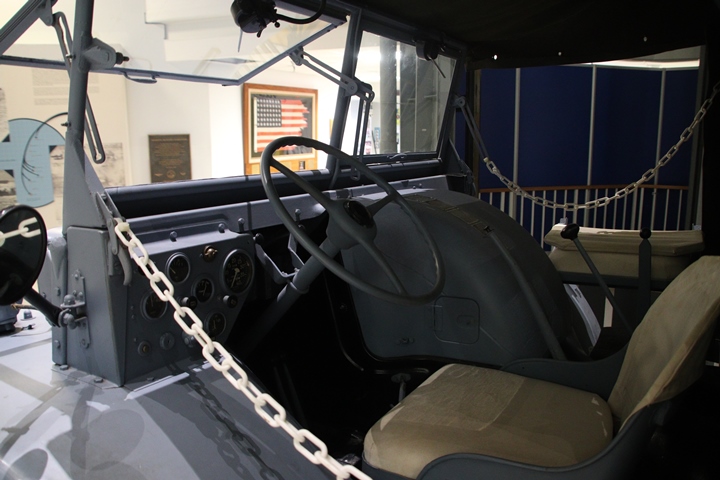
Author's photo added 6-7-2025.

Author's photo added 6-7-2025.
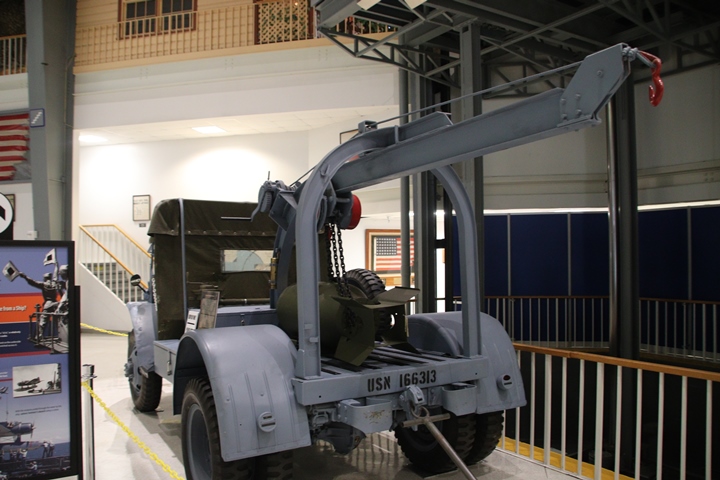
Author's photo added 6-7-2025.
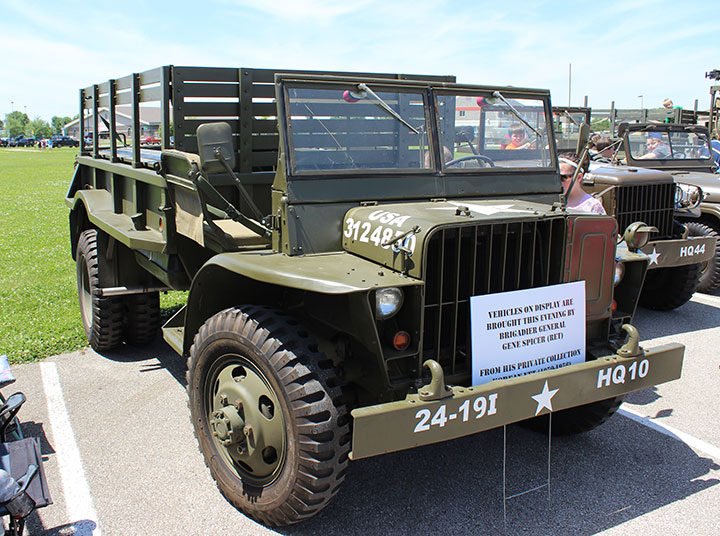
8,218 GTB 1-1/2 ton 4x4 Cargo Trucks
(Burma Jeep) were built by Ford during World War Two. This pristine example
was on display at the 2014 Aviation Day at the Columbus, IN Airport.
Note that the design is similar to the GTBC bomb truck shown above.
Author's Photo added 9-1-2014.
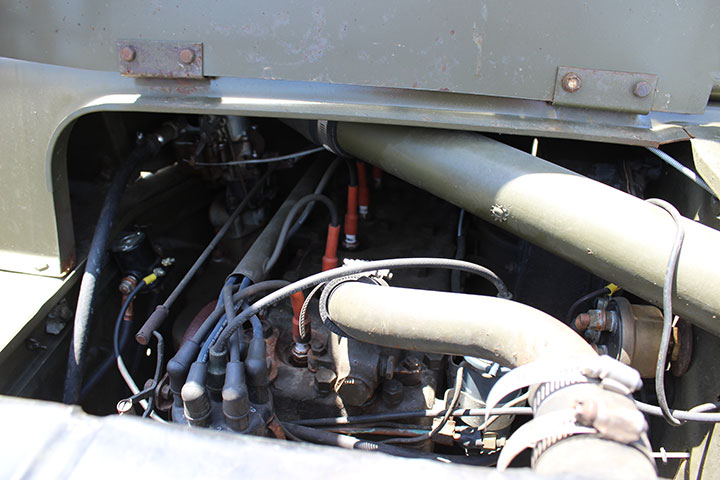
Author's Photo added 9-1-2014.
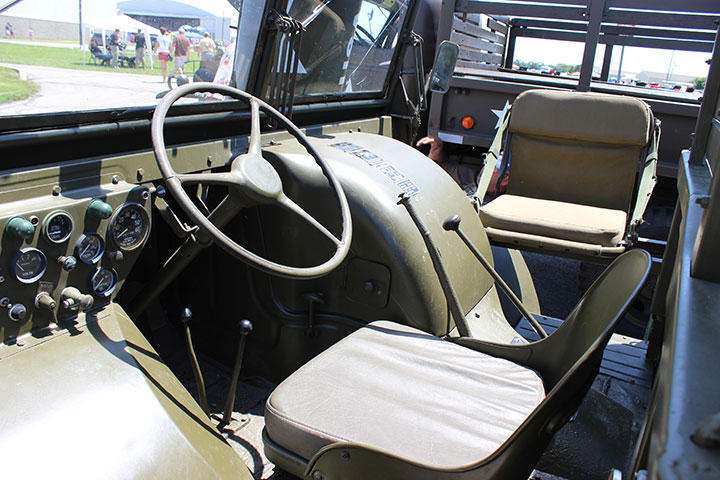
The GBT has the same sideways facing
passenger seat as the bomb truck. Author's Photo added 9-1-2014.
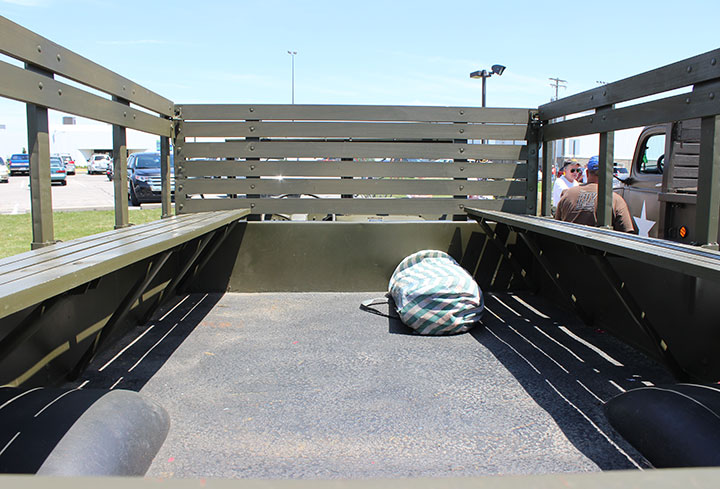
Edgewater, NJ built 5,951 GTB Cargo
Trucks, and Louisville 1,442 GTBA Cargo Trucks for a total of 7,393.
This leaves 825 units unaccounted for. Author's Photo added
9-1-2014.
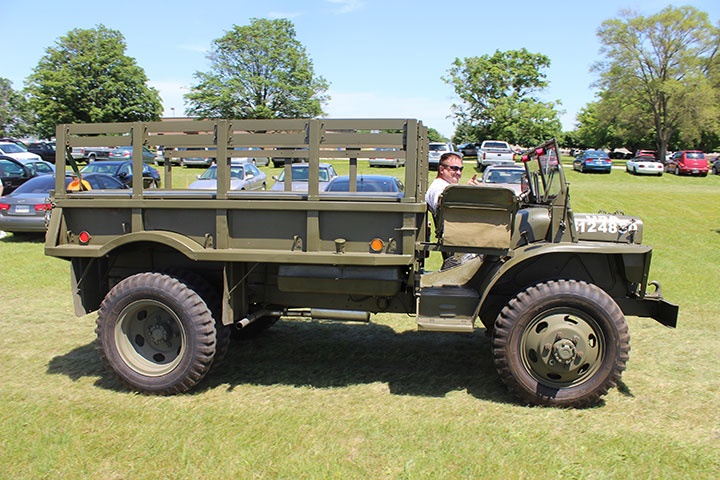
On the move back at the end of the day.
Author's Photo added 9-1-2014.
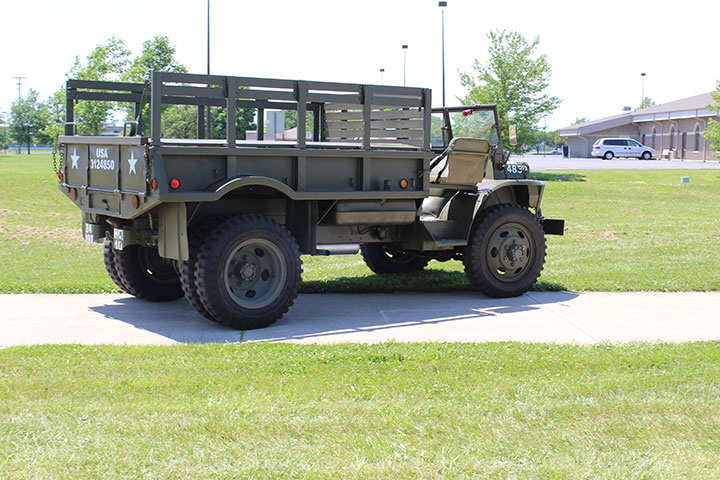
Author's Photo added 9-1-2014.
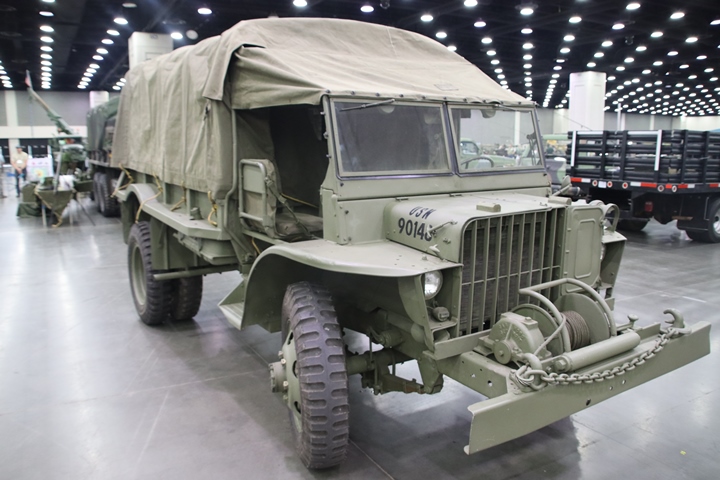
This GBT was on display at at the 2025 MVPA
National Convention in Louisville, KY. It is marked as U.S. Navy
hood number 90148. Author's photo added 6-7-2025.

Author's photo added 6-7-2025.
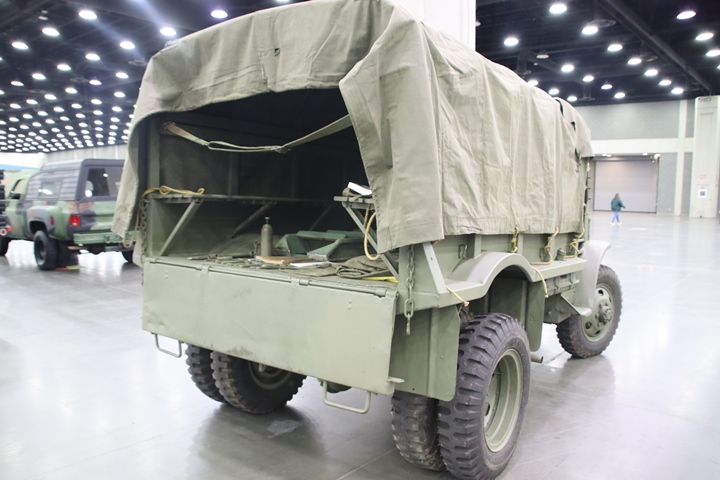
Author's photo added 6-7-2025.
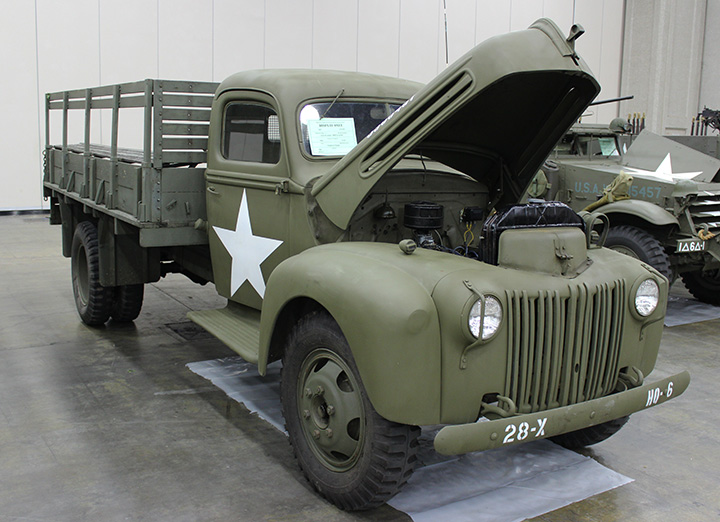
This is one of 77,915 G8T 2-1/2 ton 4x2 trucks built by Ford.
It
is basically the same as its civilian trucks. Author's Photo from the
2014 MVPA National Convention in Louisville, KY and added 9-1-2014.
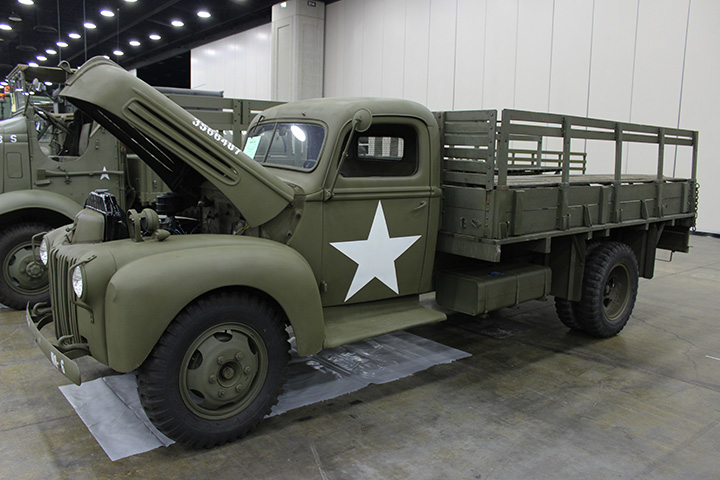
Dallas, TX built 5,899 G8T and 314 GT8A Cargo Trucks, while
Edgewater, NJ built 71,350 G8T Cargo Trucks. In this case 352
trucks are not accounted for. Author's Photo added 9-1-2014.
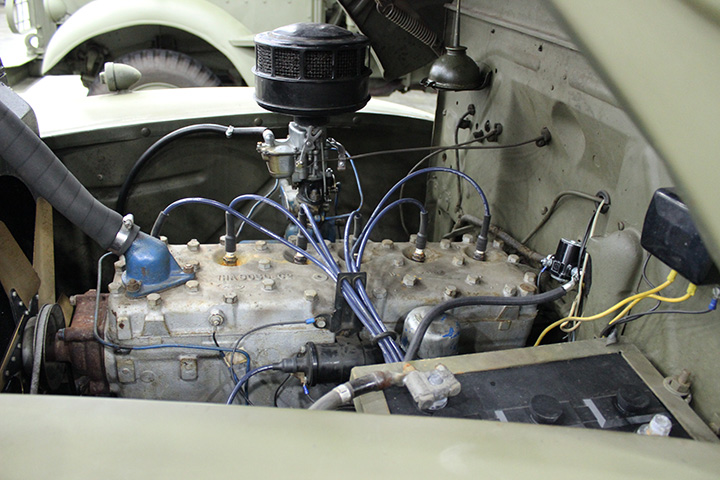
G8T production continued from September 1942 until May 1945. Author's Photo added 9-1-2014.

Most of the trucks went to the Russians under Lend Lease but many
ended up on US farms in 1945 when the war ended. Author's Photo
added 9-1-2014.
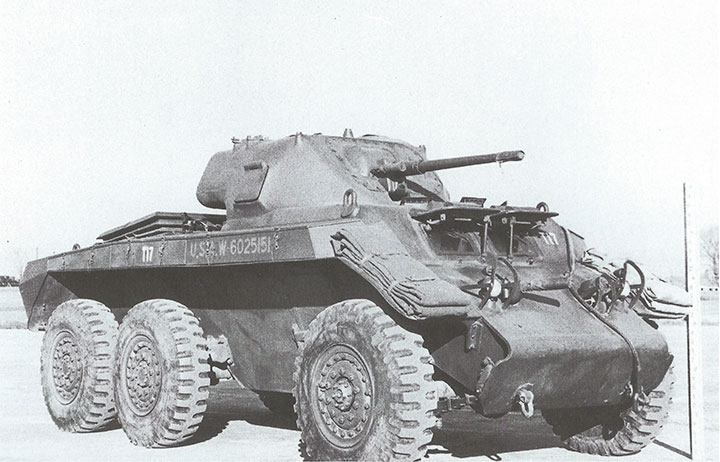
This World War Two-era photo shows one of 250
T17 armored cars produced by Ford Motor Company at the Aberdeen Proving
Grounds in Maryland. This 30-ton vehicle was to be supplied to the
British as the "Deerhound." For the U.S. Army, T17s were given to Military
Police units in the United States for use after the 37mm cannon was removed.
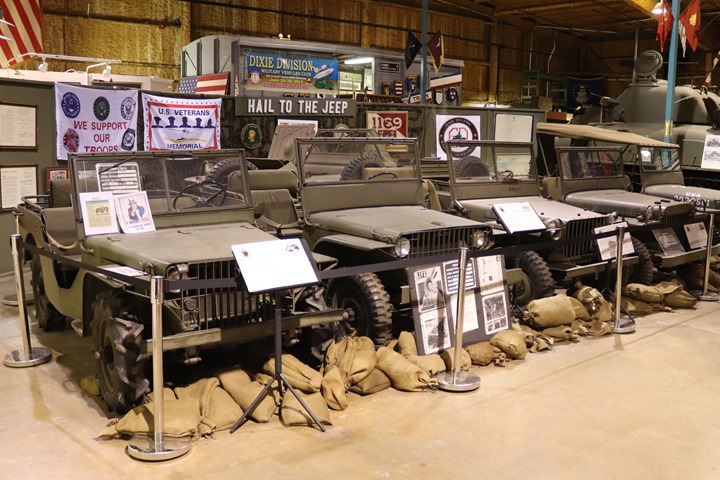
The U.S. Veterans Memorial Museum in Huntsville, AL has a unique and
historic collection of early World War Two jeeps. From left to
right is the original Ford prototype jeep, a 1941 Ford GP, a 1941 Bantam
BRC 40, and a 1941 Willy Model MA. For the jeep or military vehicle
historian, these are worth the trip to Huntsville themselves. But
these are just part of a great collection of military history and
vehicles at the museum. Author's photo added 2-27-2020.
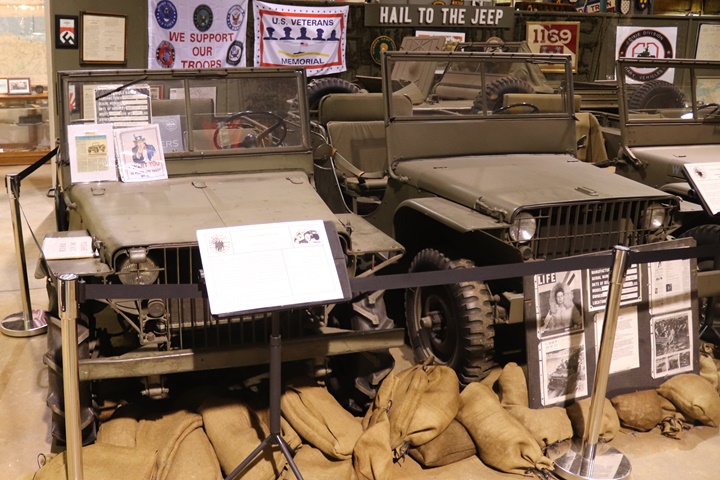
Our interest for this page are the two Ford jeeps. Author's photo
added 2-27-2020.
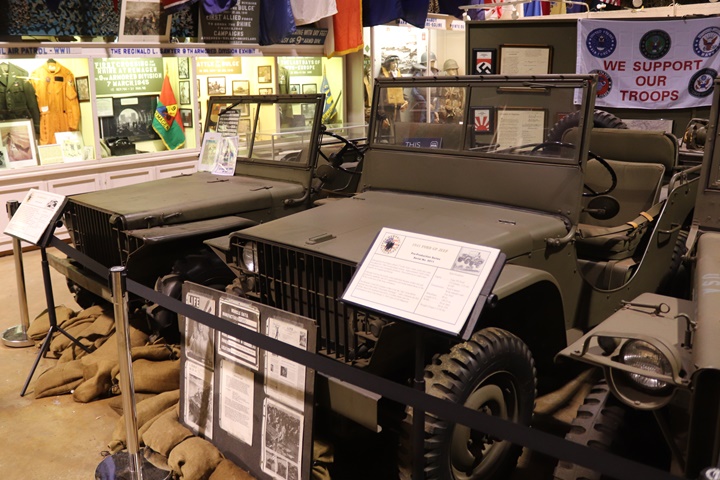
Author's photo added 2-27-2020.

This is the very first jeep that the Ford Motor Company built in
response to the U.S. Army's request to provide samples for a 1/4-ton
reconnaissance car. This was the first of two prototypes built by
Ford. Both were Ford property and were returned to the company
when the testing was complete. This became part of the Henry Ford
Museum in Dearborn, MI and was purchased by the U.S. Veterans Military
Museum in 2015. The GP-1 was built by hand in Dearborn, MI and had
tractor tires, a 4-cylinder 46hp tractor engine and a Model A four-speed
transmission. Author's photo added 2-27-2020.
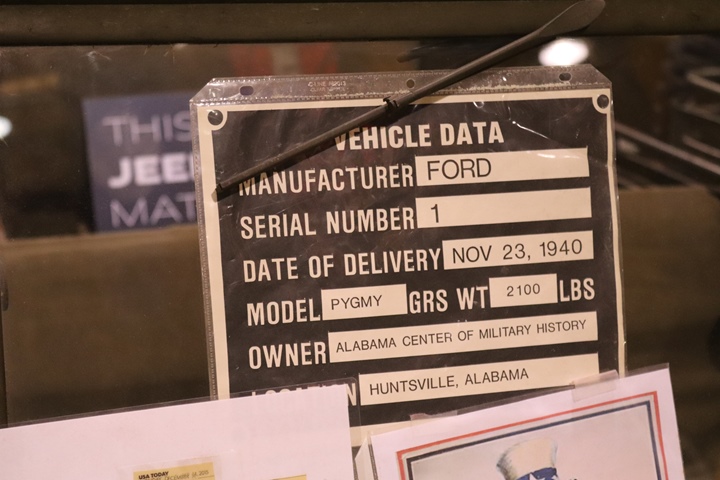
This is the oldest surviving jeep. Author's photo added 2-27-2020.
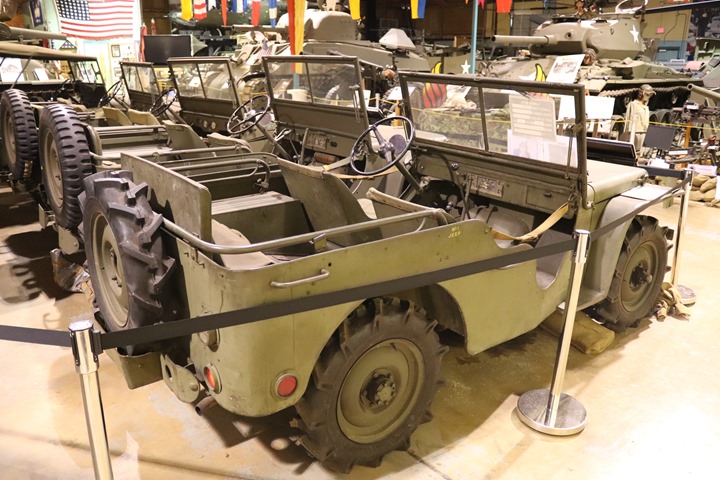
Author's photo added 2-27-2020.
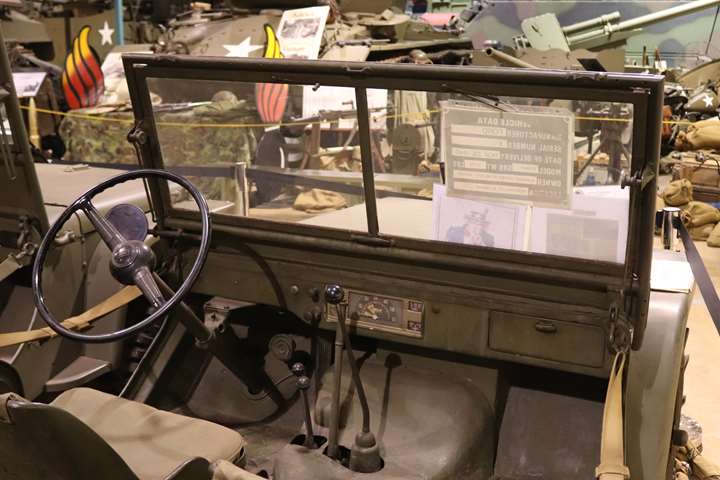
Author's photo added 2-27-2020.

Author's photo added 2-27-2020.
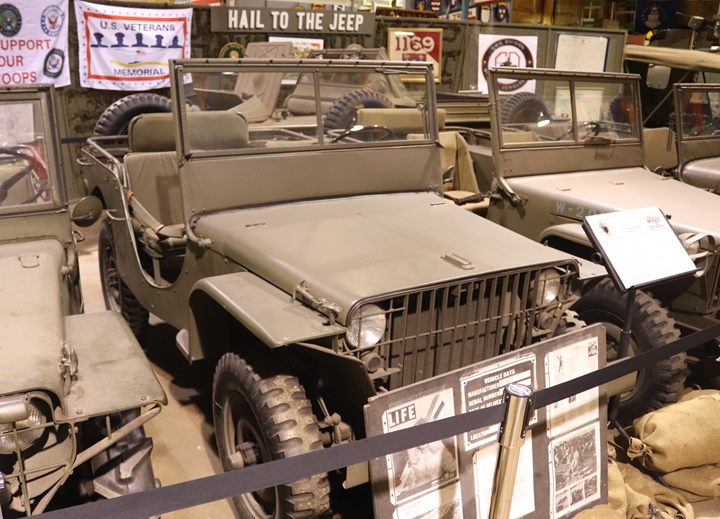
This is the 1941 Ford GP that is next to the
line of jeeps. It was built on May 8, 1941, with serial number
9911. Author's photo added 2-27-2020.
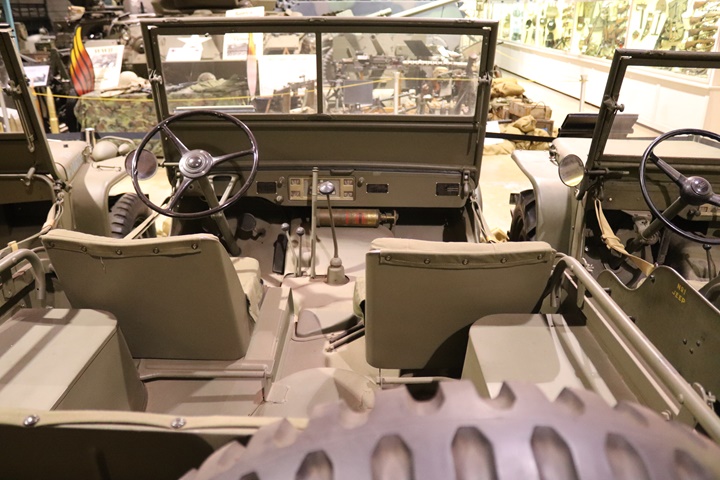
Author's photo added 2-27-2020.
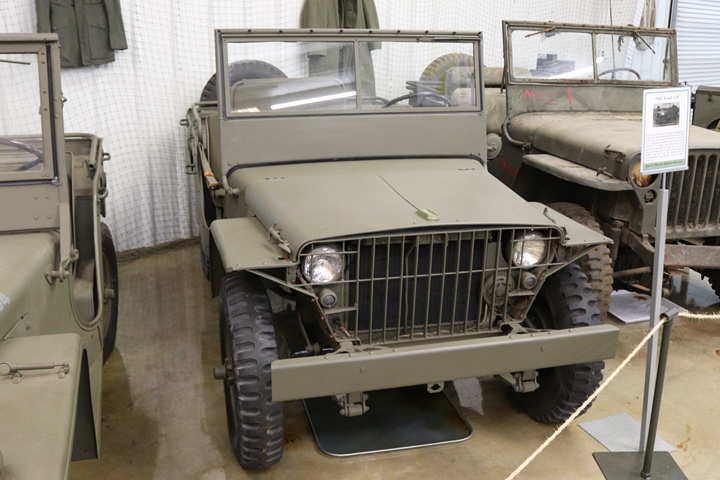
This 1941 Ford GP is on display at the Sam
Werner Military Museum in Monteagle, TN. Author's photo added
2-27-2020.
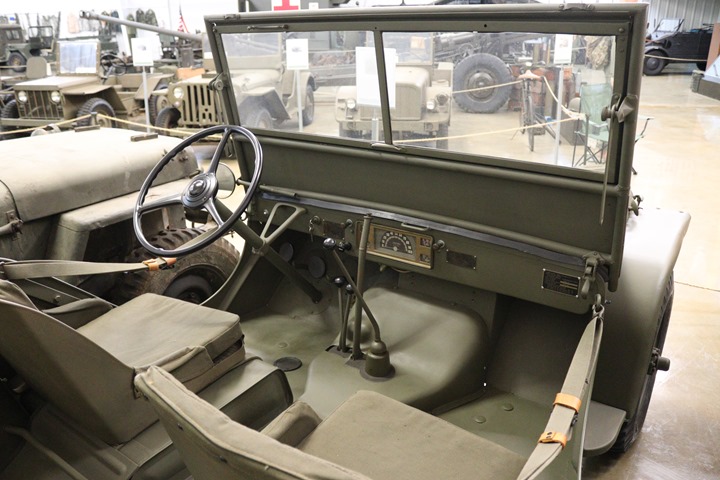
Author's photo added 2-27-2020.
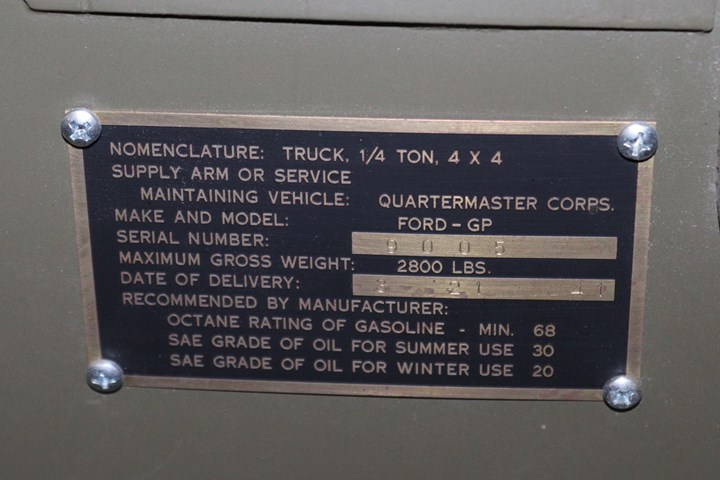
This jeep was built on 3-21-1941 and is serial number 9005.
Author's photo added 2-27-2020.
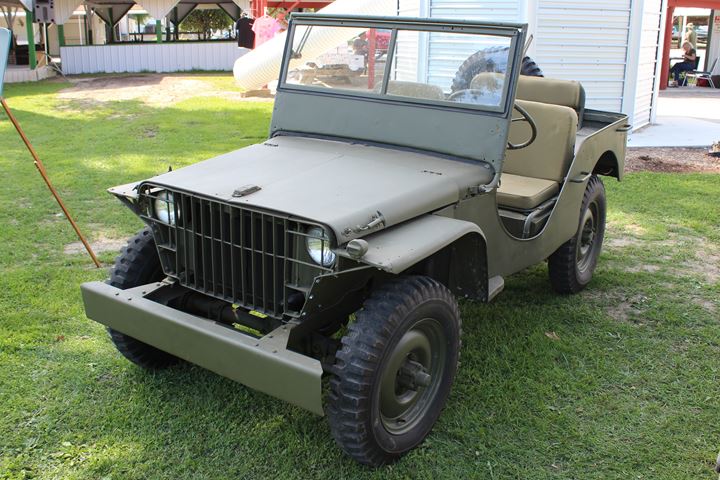
Ron Stauffer of Portland, IN is the owner of
this 1941 Ford GP. Author's photo added 2-27-2020.
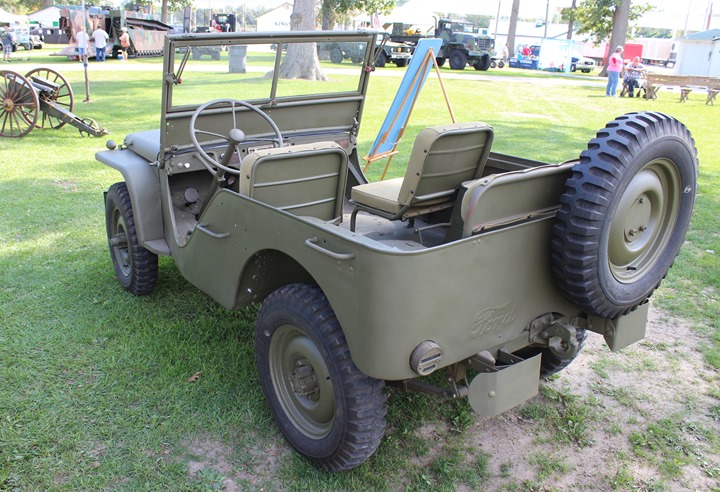
Note that the Ford name is stamped into the rear of the vehicle.
Author's photo added 2-27-2020.
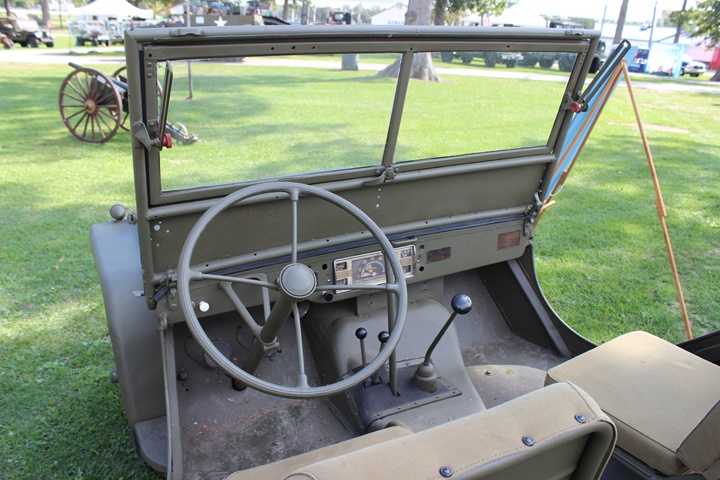
This was photographed at the 2014 MVPA show in Portland, IN.
Author's photo added 2-27-2020.
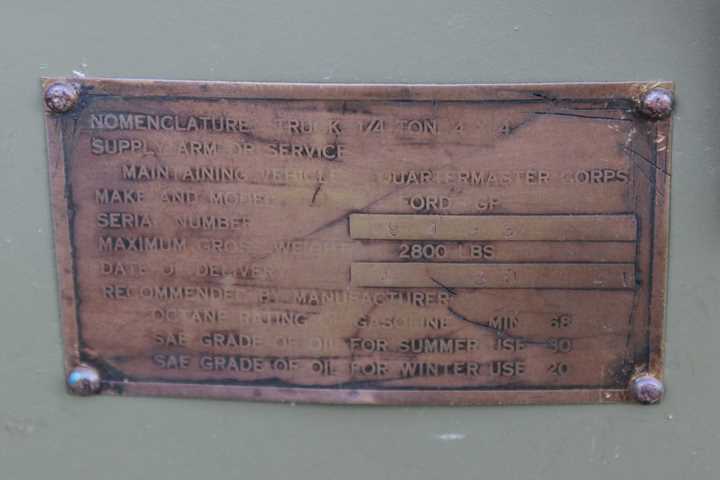
This vehicle is serial number 9493
and was built 4-20-1941. Author's photo added 2-27-2020.

A Ford-built GPW Jeep photographed at the
MPVA Rally at the now defunct Ropkey Armor Museum. Author's Photo.
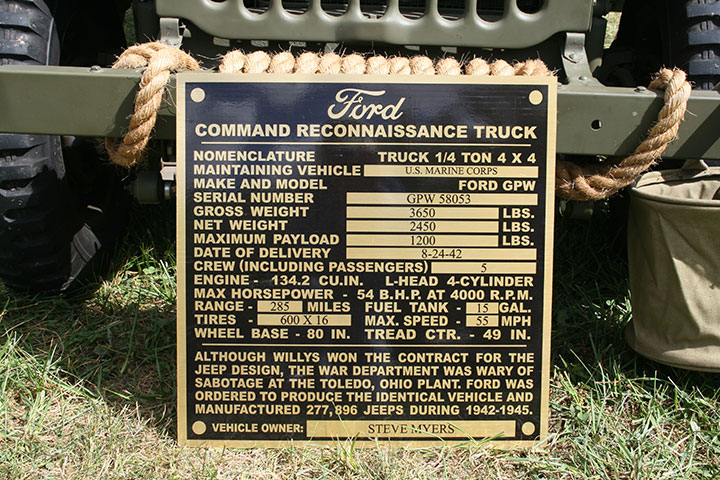
The 277,896 number given above includes only
the GPW model with a Willys engine. Another 4,458 of the GP model
with a Ford engine brought the total to 282,354
Ford-built Jeeps during WWII. Author's Photo.
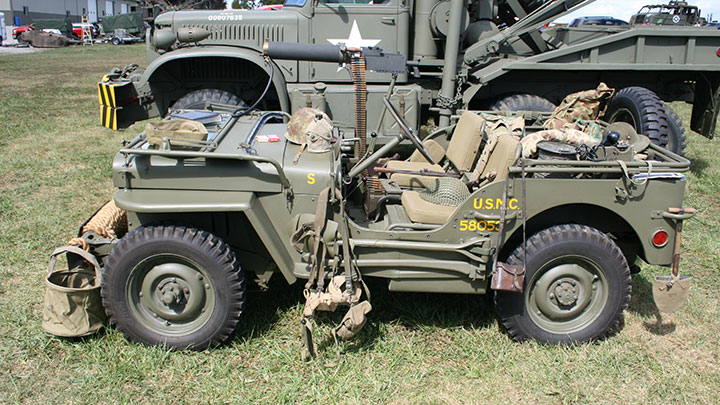
Author's Photo.
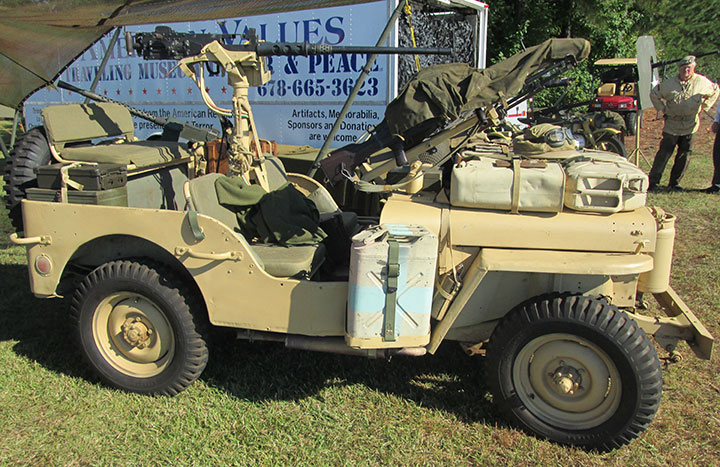
This Ford was delivered to the US Armed
Forces on May 3, 1943. It was seen at the 2013 Great Georgia
Airshow as the British Long Range Desert Group would have equipped it. Author's Photo.
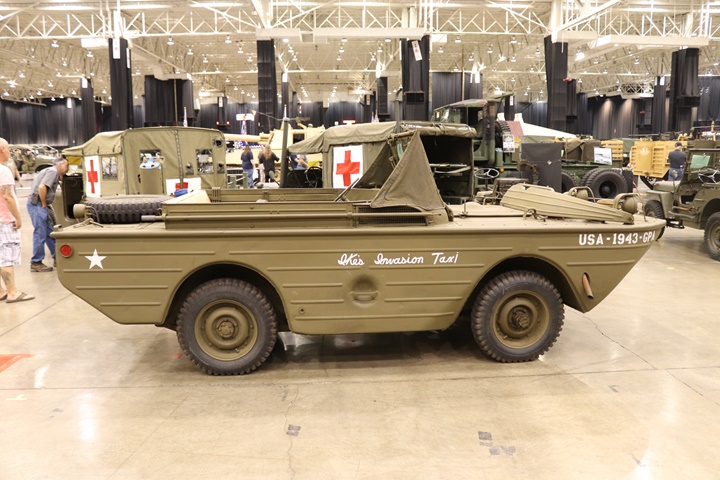
This Ford GPA is one of
12,782 Amphibious Jeeps (Seeps) produced by Ford at the River Rouge.
It is on display at the 2017 MVPA National Convention at Cleveland, OH.
This previously belonged to a military museum in Auburn, IN. Author's photo
added 12-25-2019.
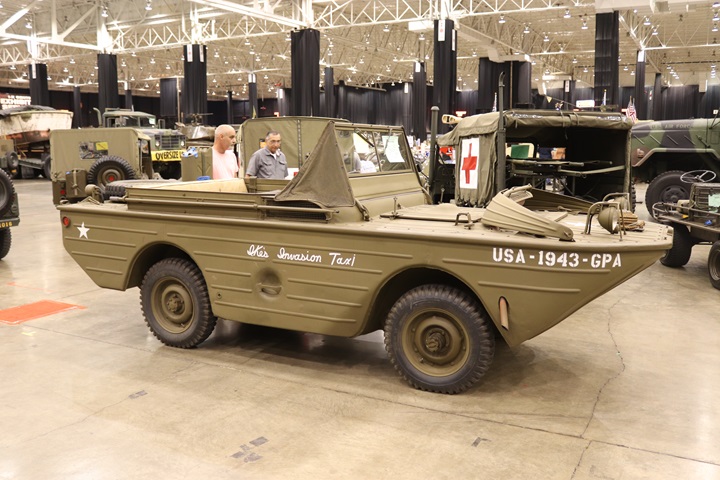
This is Serial Number 11563, built in 1943.
Author's photo added 12-25-2019.
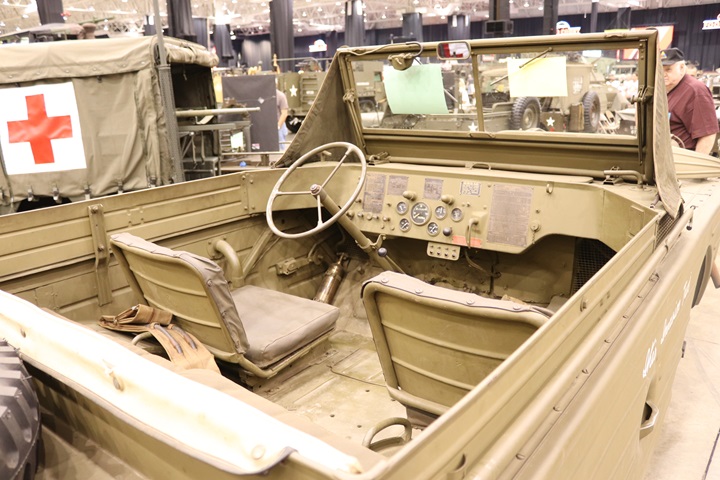
Author's photo added 12-25-2019.
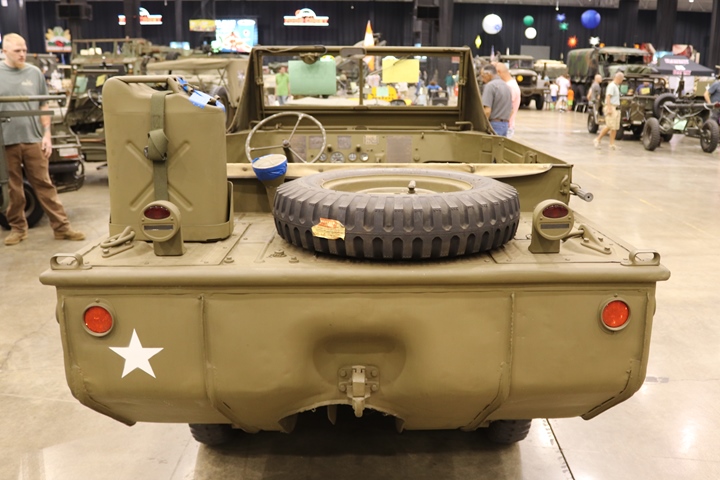
Author's photo added 12-25-2019.
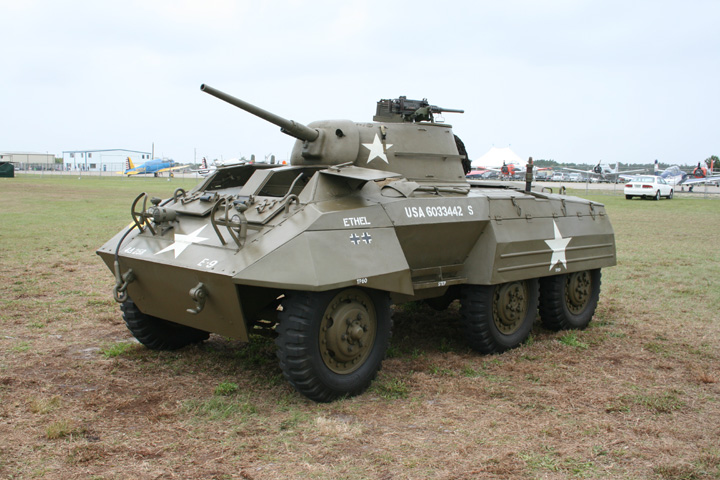
Ford built 8,410 of these M8 armored cars as the sole manufacturer of
the type. Ford's designation for it was GAK. This particular
one was built
either in St. Paul, MN or Chicago, IL. It was reported that 6,397
were built in St. Paul and 2,126 Chicago. However, the total from
the two plants differs from the overall reported total by 113 units. This one was seen at the Tico, FL Airshow in 2012. Author's Photo.
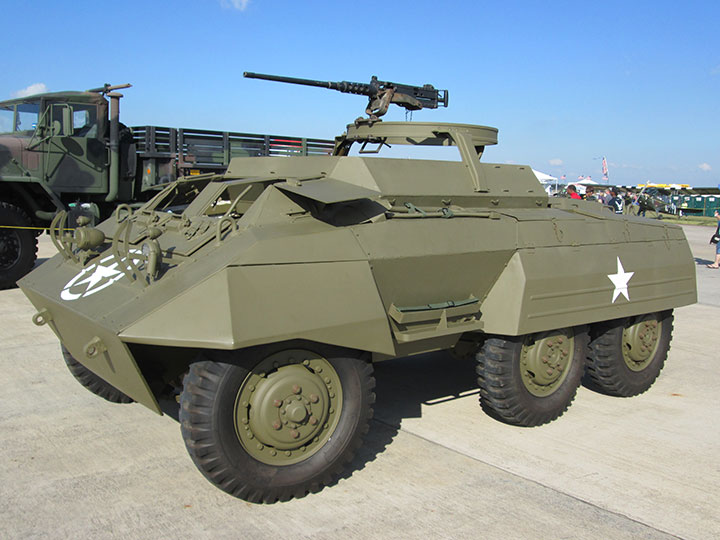
The M20 version of the Ford armored car came without the turret but
retained a .50 machine gun for defense. It was used primarily as a
command car with more radios. Ford built all 3,791 of these at its
Chicago, IL facility. Author's Photo from the 2013 Wings over Houston Airshow.
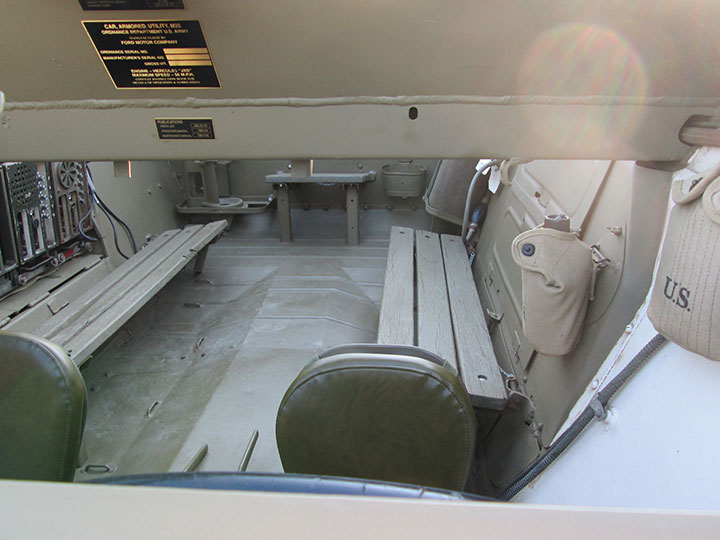
The M20 was used as either a command car
with an extra complement of radios or as an armored troop carrier.
Here we can see the bench seats along the sides. Author's Photo.
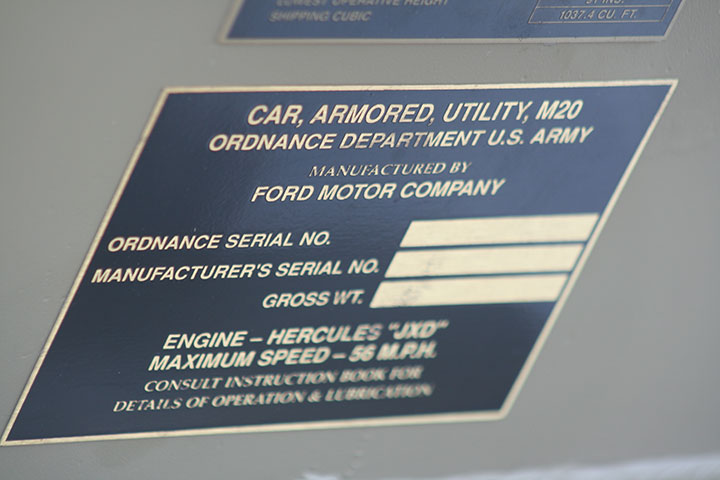
Author's Photo.
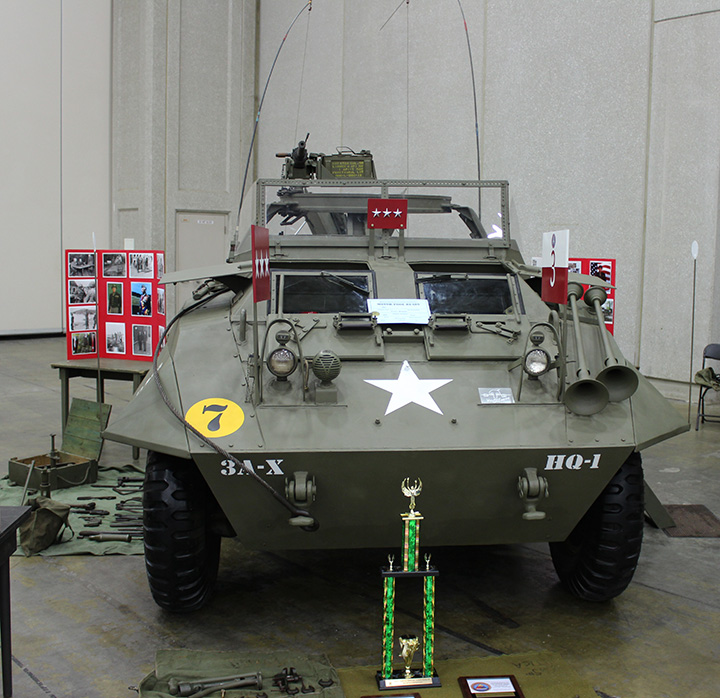
General Patton used an M20 for his command car when he was in
Europe. This is a re-creation of that vehicle. Author's
Photo from the 2014 MVPA National Convention in Louisville, KY and added
9-1-2014.
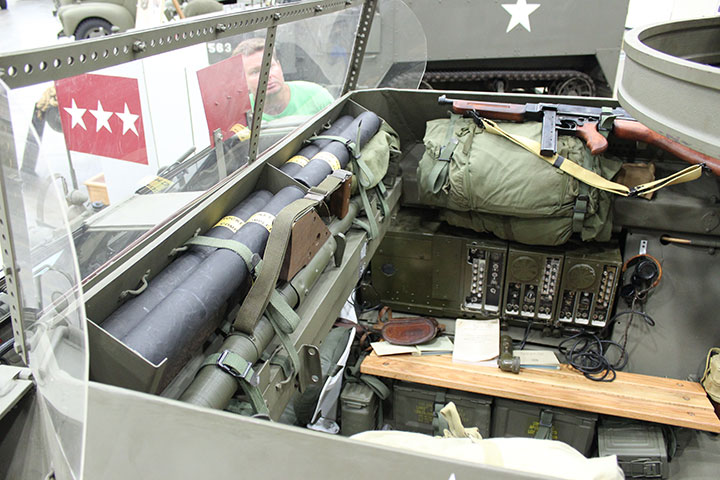
Under the windscreen is an M1 2.36 inch bazooka and four rounds of
ammunition. The radio and a Thompson submachine gun are on the
opposite wall. Author's Photo added 9-1-2014.
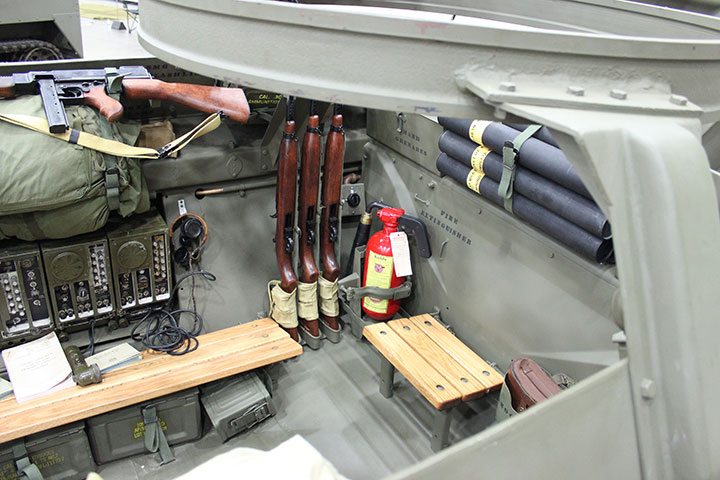
More bazooka ammunition on the back wall with three M1
carbines. Author's Photo added 9-1-2014.
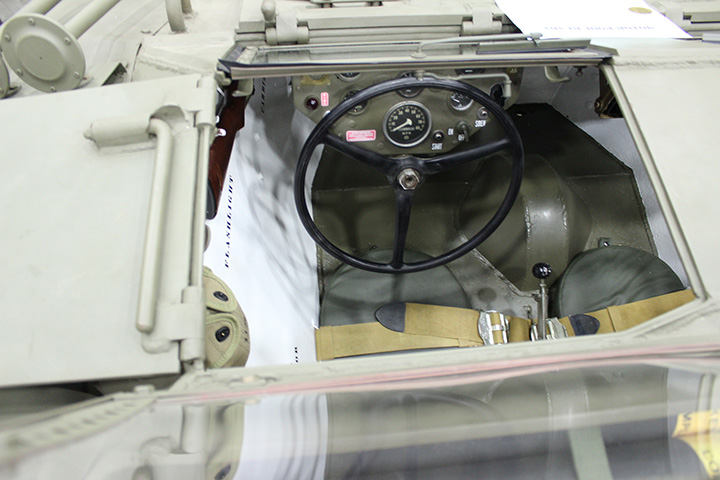
The driver's location. Author's Photo added 9-1-2014.
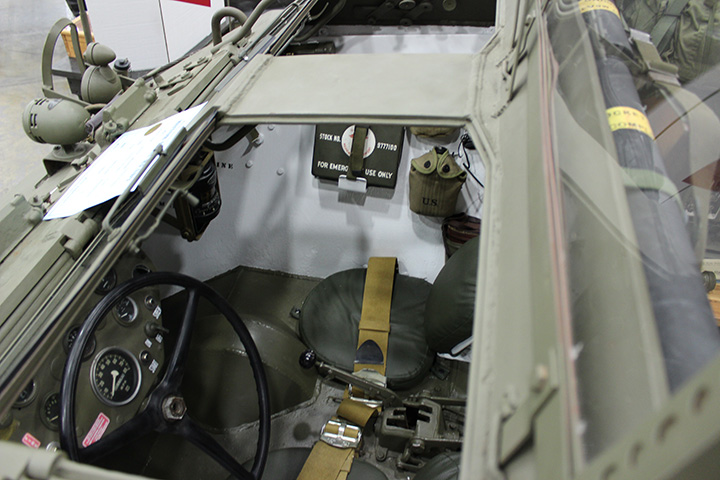
Another photo of the driver's location and the assistant driver's
seat. Author's Photo added 9-1-2014.
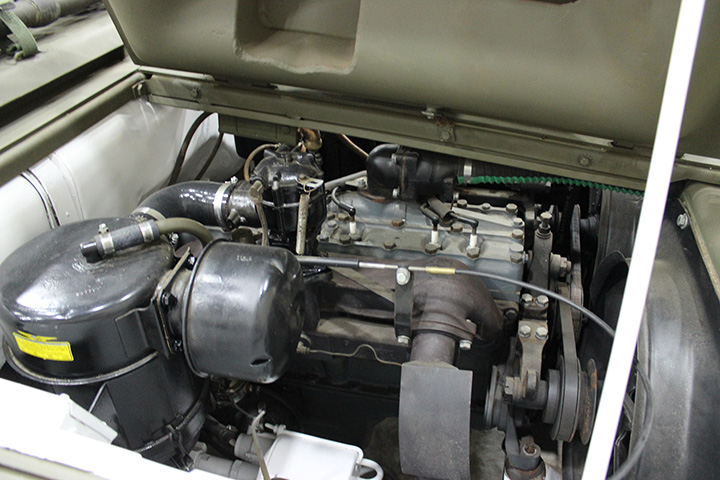
The M20 was powered by a Hercules JXD inline six-cylinder engine,
as seen here from the driver's side of the vehicle. The JXD could
produce 110 hp from 320 cu. in. The Author's Photo added 9-1-2014.
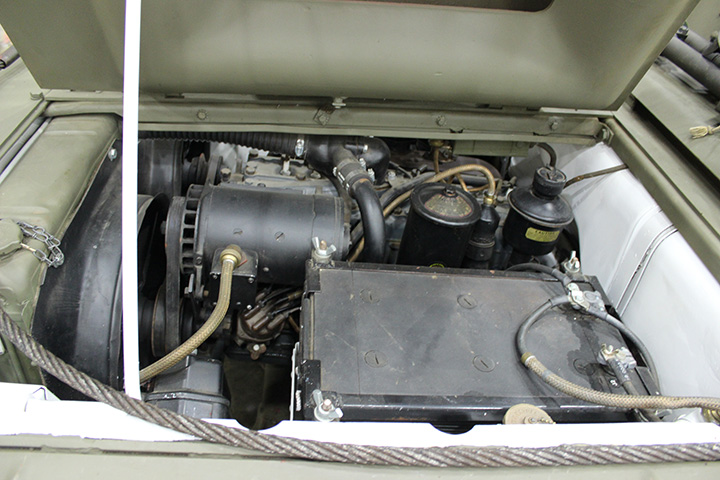
Here is the engine from the assistant driver's side with the
battery box in the foreground. Author's Photo added 9-1-2014.
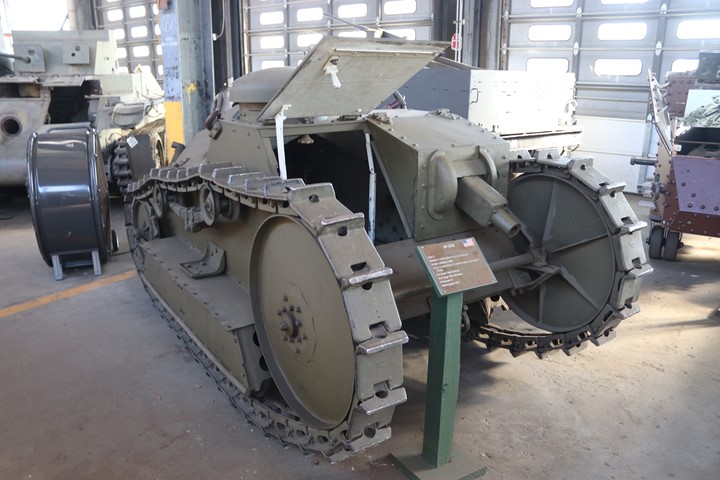
Ford Motor Company built 1,690 M4A3 Sherman
Tanks and 1,038 M10A1 Tank Destroyers during World War Two. It
acquired previous experience in building tanks during 1918 at the end of
World War One. This is one of two surviving Ford-built Model 1918
tanks out of the fifteen that were built. The vehicle was designed in
two days, the first prototype was built in three weeks, and a 222 foot
by 530 foot building for mass production of the vehicle was built in 30
days. Ford was given a contract to build 15,000 units at a
rate of 100 per day. The end of World War One prevented the tank
from going into production. Author's photo from the National Armor
and Cavalry Tank collection at Fort Benning, GA added 9-22-2018.
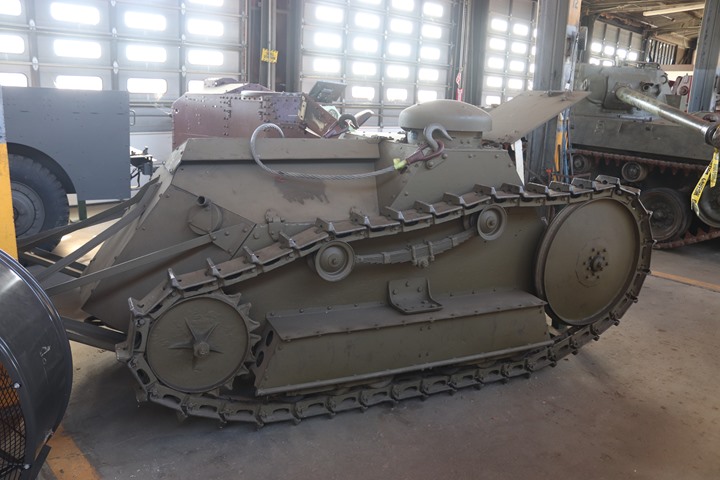
The Ford 1918 tank was powered by two Ford
Model T engines and was armed with a .30 caliber machine gun. It
had a two man crew. Author's photo added 9-22-2018.
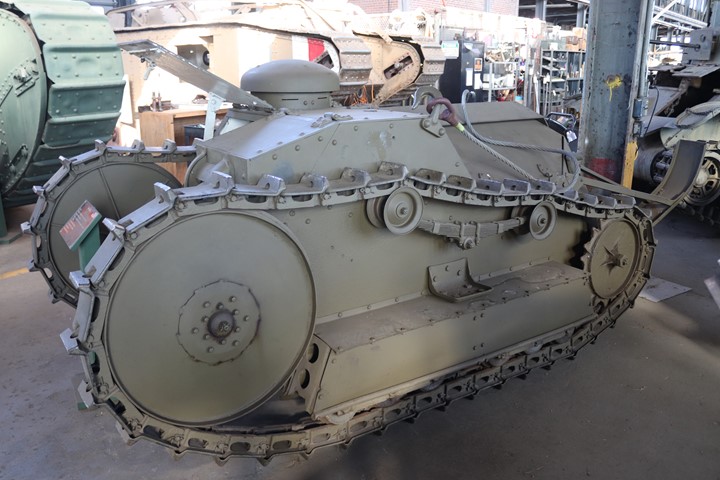
Author's photo added 9-22-2018.
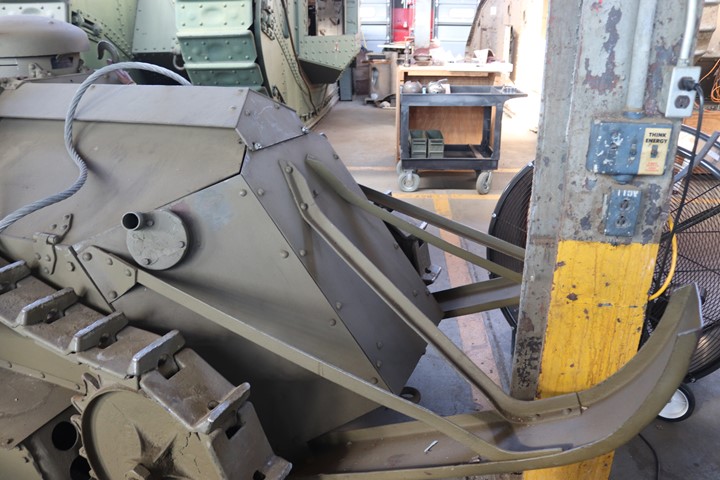
Author's photo added 9-22-2018.
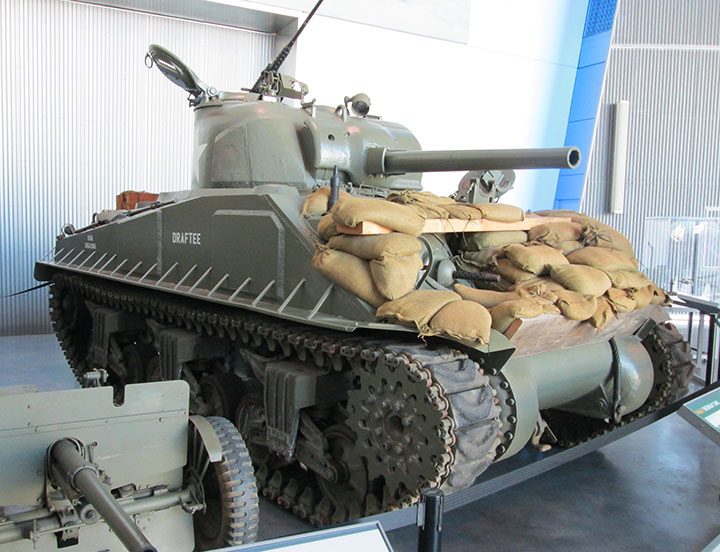
This is an extremely well restored
example of the 1,690 Ford-built M4A3 small hatch Sherman tanks
constructed at its Highland Park, Michigan plant. This was the only type of
Sherman tank Ford built; and was photographed at the WWII Museum in New
Orleans, LA.
The original small hatch M4 Sherman tanks,
like this Ford built M4A3, had the front glacis angled 57 degrees from
the vertical, to hopefully have enemy anti-tank shells deflect off the
glacis rather than penetrate it. However, this allowed for the
driver's and assistant driver's hatches to protrude forward of the
glacis, creating a weak spot in the armor. Steel plates were
welded in front of them in the field or at tank depots to increase armor
protection. The later large hatch tanks got away from this problem
by reducing the glacis angle to 47 degrees. This eliminated the
protruding hatch bulges. The glacis armor thickness was increased
to compensate for the smaller angle of deflection. Author's Photo.
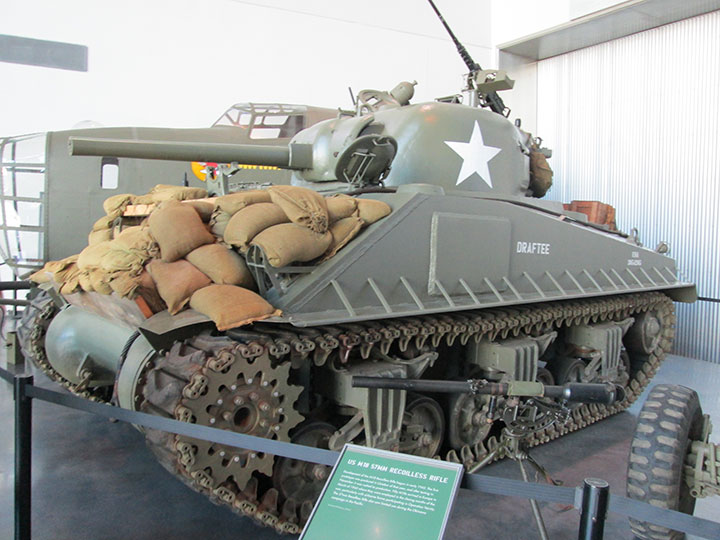
The Ford-built M4A3 Sherman was powered by
Ford's GAA 500 hp engine as shown below. Sand bags were placed on
the front glacis to give more protection, not only against German tank
shells but the just as dangerous hand held Panzerfaust anti-tank weapon. Author's Photo.
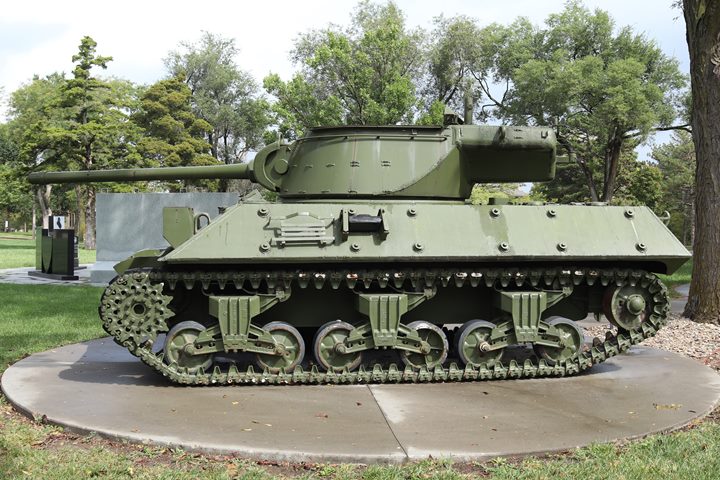
This M36 Jackson Tank Destroyer is on display at the U.S. Cavalry Museum
at Fort Riley, KS. It was originally built in April 1943 as a Ford M10A1 with serial number 2274. Author's photo added 4-27-2018.
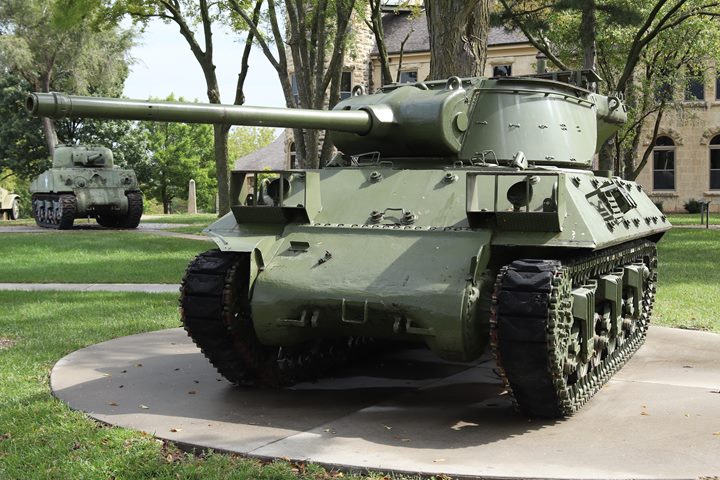
Here are two American automotive industry products in the same photo.
The M36 built on a Ford M10A1 chassis is in the foreground and a Fisher
Body M4A3(75) is in the background. Author's photo added 4-27-2018.
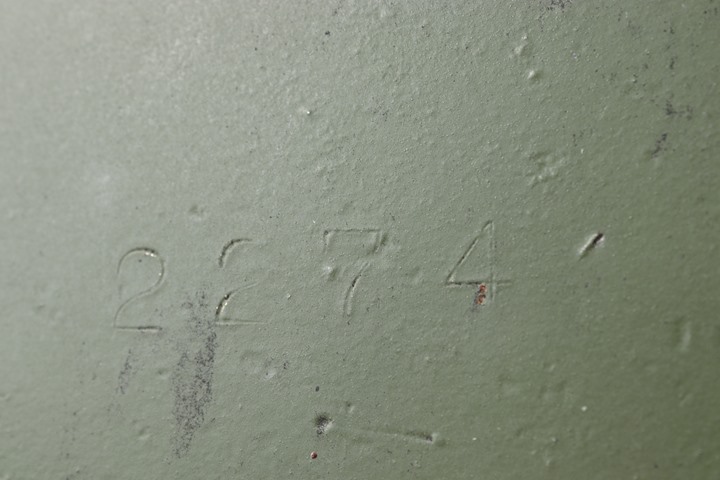
The serial number 2274 is plainly stamped on the chassis in
several locations. Author's photo added 4-27-2018.
The Ford-built M10A1 tank
destroyers did not see overseas duty and were delegated to training
in the United States. This happened because it was powered by the Ford GAA
V-8 engine while the Fisher Body M10 version was powered by twin Detroit
Diesel engines. Five times the number of Fisher Body M10s were
available for combat duty versus the M10A1. The Army also did not
want two different type engines in the field. It therefore chose to have the Ford
stay in the US for training purposes. But the M10A1 did see combat
duty when converted to the M36 like the one shown above. The M10A1
was armed with a three inch main gun. The M36 was armed with
a larger 90mm main gun needed to penetrate the more heavily armored
German tanks that US forces were coming up against in Europe. It
also had a different turret for the 90mm main gun.
|
Ford built M10A1 Serial Numbers |
|
Serial Numbers |
Registration Numbers |
|
1803-2840 |
4046509-4047546 |
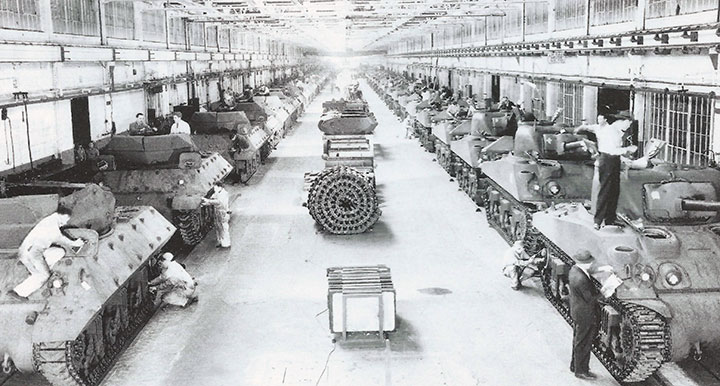
This photo shows both the M10A1 Tank
Destroyers and M4A3 Tanks coming down parallel production lines at the
Ford Highland Park assembly plant circa 1942-43.
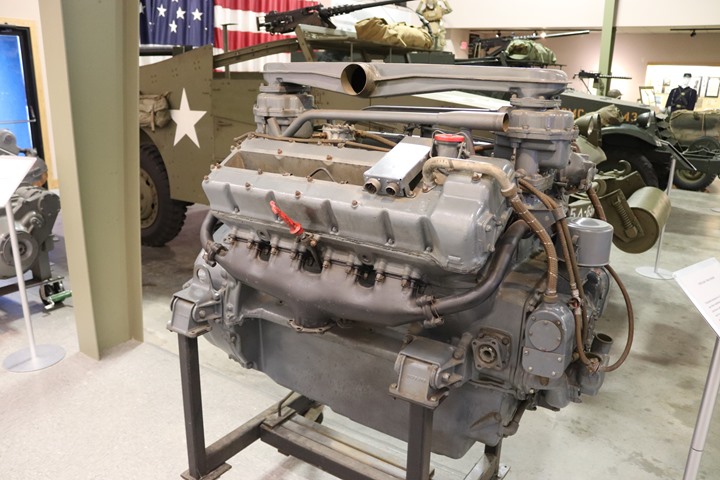
Ford built 20,999 GAA 1,100 cubic inch, 500 hp engines in its Lincoln
Plant in Detroit for use in the M4A3 Sherman tank, M10A1 Wolverine tank
destroyer, and later in the M26
Pershing. The engine block castings for the GAA were poured at the River
Rouge. Author's Photo taken at the Wright WWII Museum added
11-14-2017.
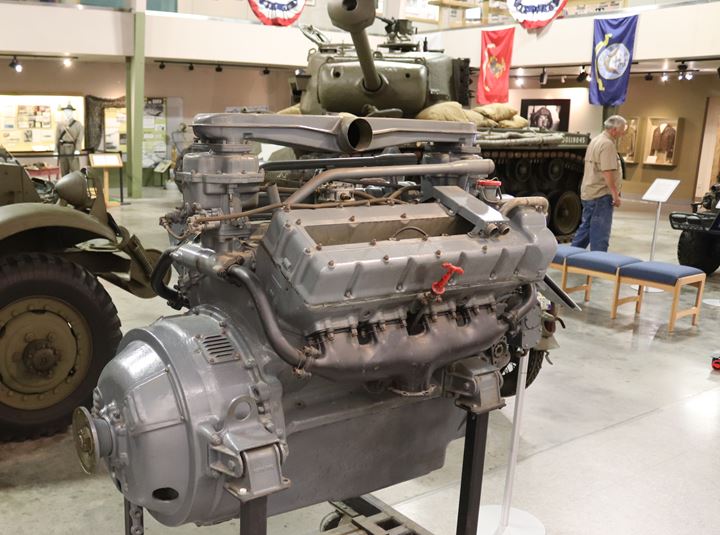
Another version of the GAA, the GAF, powered the M26 Pershing heavy tank
seen in the background. Author's Photo taken at the Wright WWII
Museum added 11-14-2017.
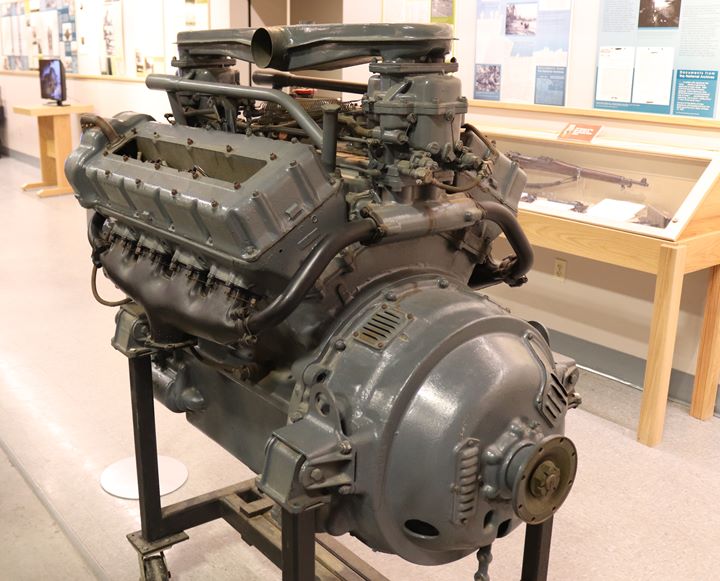
The engine had 32 valves and four overhead cams and weighed 1470 lbs. Author's Photo
taken at the Wright WWII Museum added 11-14-2017.
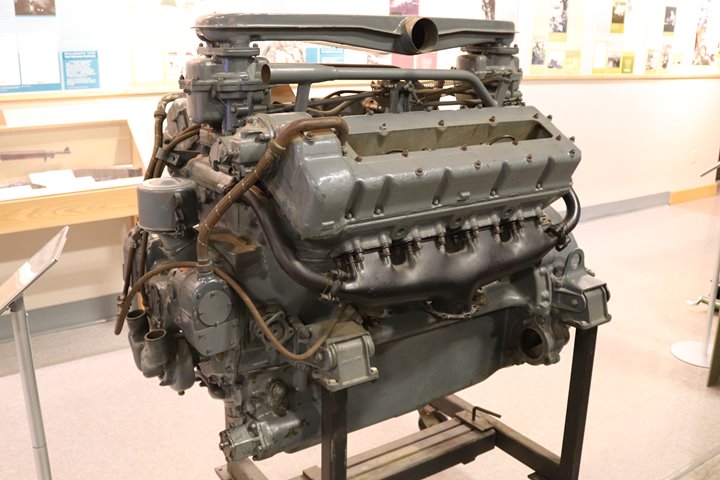
During operation, a sheet metal cover hides the spark plugs and sparkplug
wires. Author's Photo taken at the Wright WWII Museum added
11-14-2017.
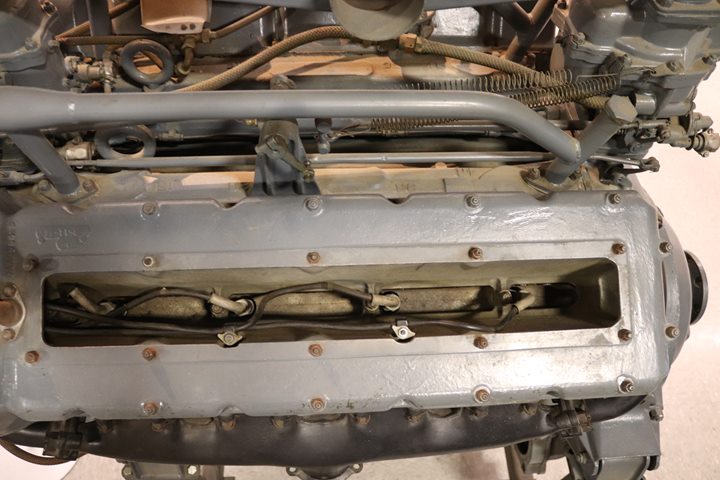
Author's Photo taken at the Wright WWII Museum added 11-14-2017.
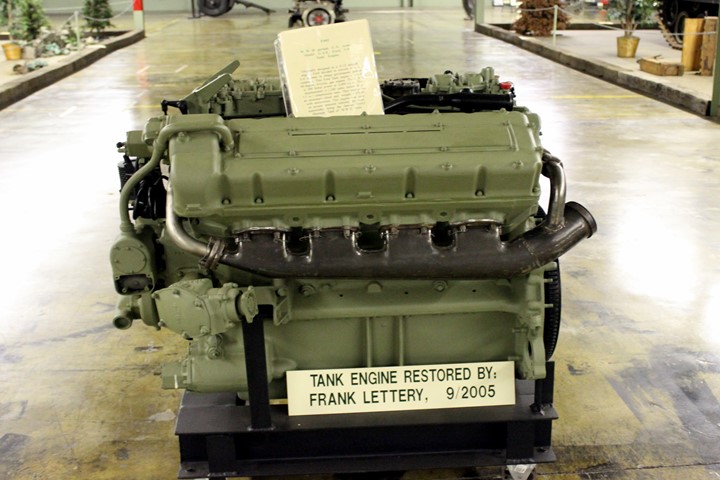
This is a one of 3,688 Ford GAF tank engines that were used in the M26
Pershing tank. Note the lower profile compared to the GAA above.
The lower profile was required to fit into the shorter engine bay of the
M26. The air filters were located off the engine with pipes
delivering the air to the carburetor. Author's Photo taken at the
AAF Tank Museum added 11-29-2017.
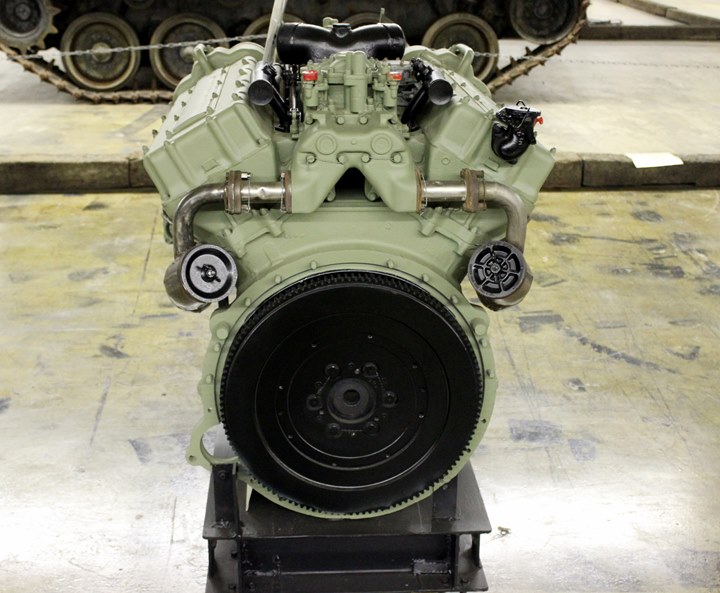
Author's Photo taken at the AAF Tank Museum added 11-29-2017.
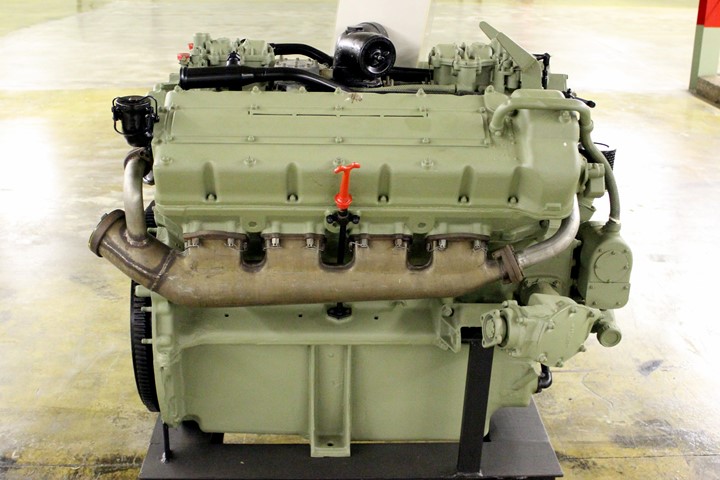
Author's Photo taken at the AAF Tank Museum added 11-29-2017.
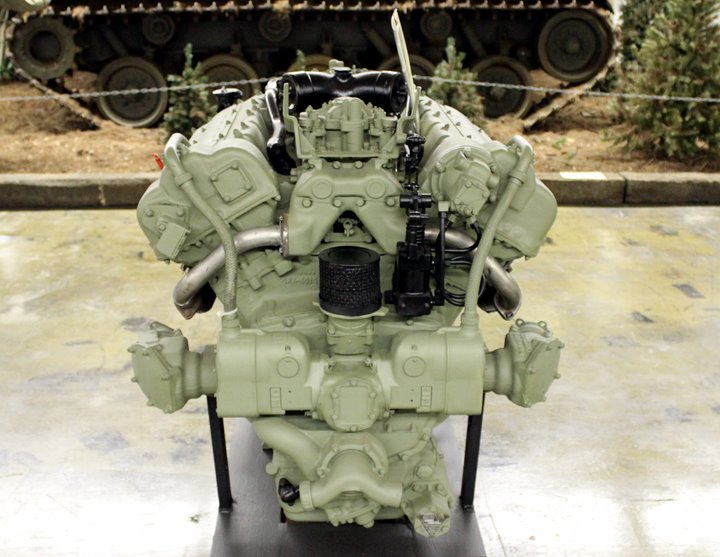
Author's Photo taken at the AAF Tank Museum added 11-29-2017.
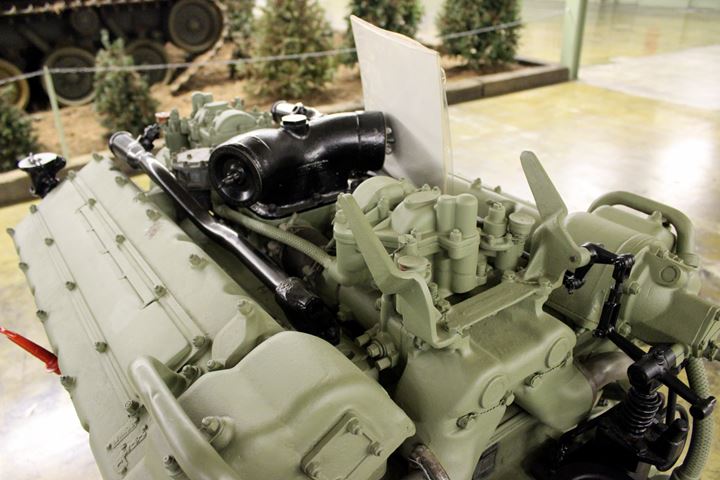
Shown here is black intake from the detached air filters via piping.
Author's Photo taken at the AAF Tank Museum added 11-29-2017.
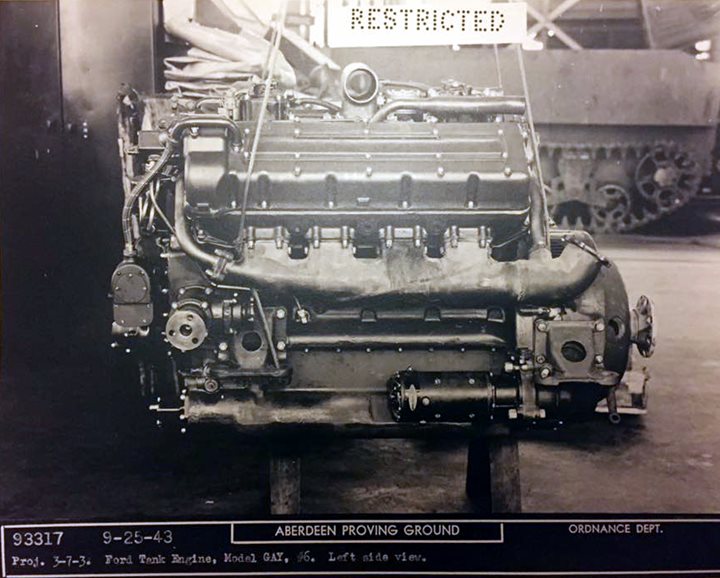
This World War Two era photo shows one of 26 GAY
tank engines built for possible use in a British tank. Photo added
11-29-2017.
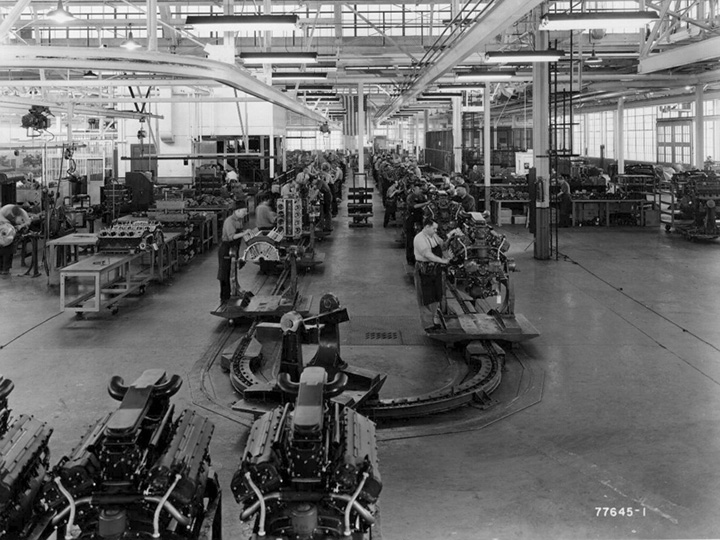
Here is a World War Two-era photo of the tank engine
assembly at the Lincoln Plant.
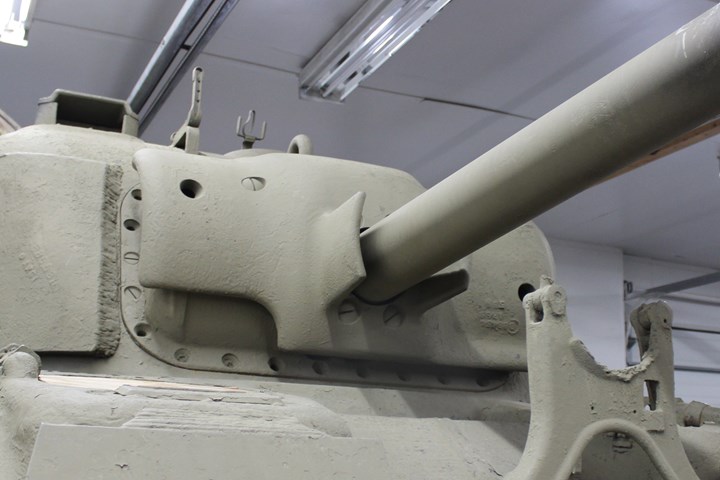
Ford assembled 19,985 M34/M34A1 gun mounts
at the Highland Park plant from parts made at the River Rouge. Six
manufacturers of the Sherman tank then assembled them into the tanks.
Author's photo added 2-1-2018.
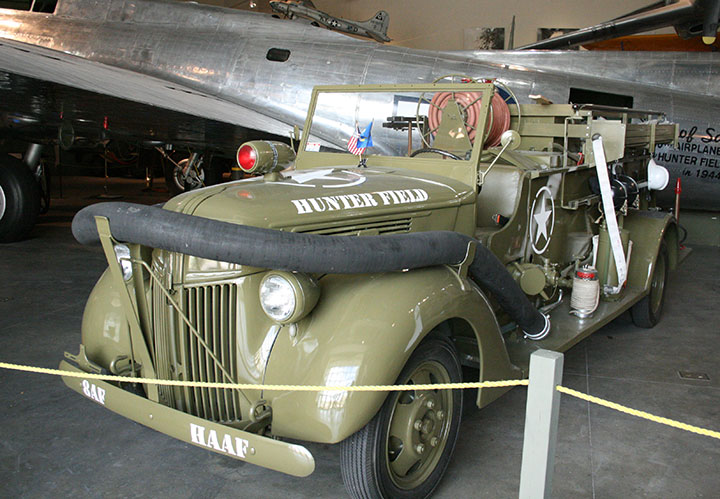
This 1941 Ford Fire Truck served at Hunter
Field in Savannah, GA during World War Two. As seen at the Mighty
Eighth Air Force Museum in Pooler, GA. Author's Photo.
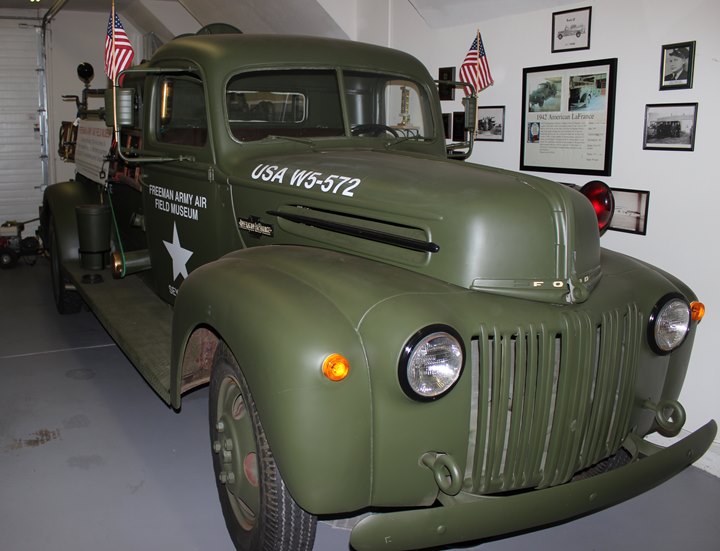
This 1942 Ford/American LaFrance fire truck
served at Freeman Army Airfield in Seymour, IN during WWII. It
then served with the Seymour fire department after the airfield closed
in 1946. It can be seen on display at the Freeman Field Airfield
Museum at the Seymour, IN airport. Author's Photo added 3-1-2017.
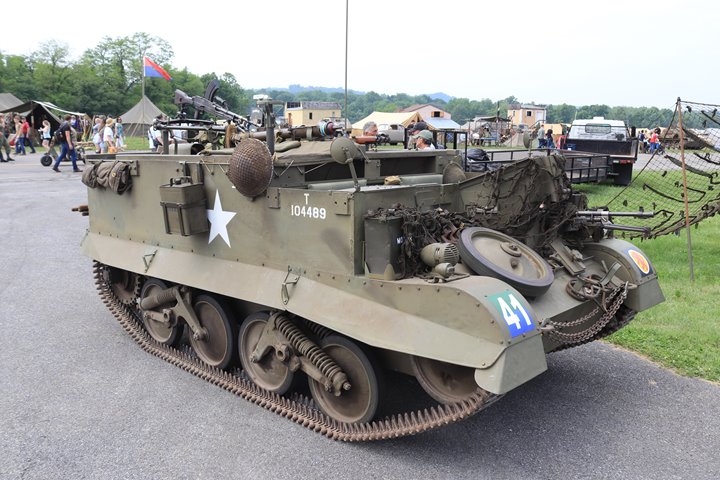
Ford Motor Company produced 13,893 Universal
Carries for British Commonwealth nations at its Somerville, MA remote
assembly plant. Ford of Canada in Windsor built another 33,988. The Universal Carrier
carried the Ford internal designation of GAU but was
better known a Bren Gun Carrier. This
very nicely restored GAU was at the 2018 World War II Weekend at Reading, PA.
Author's photo added 6-22-2018.
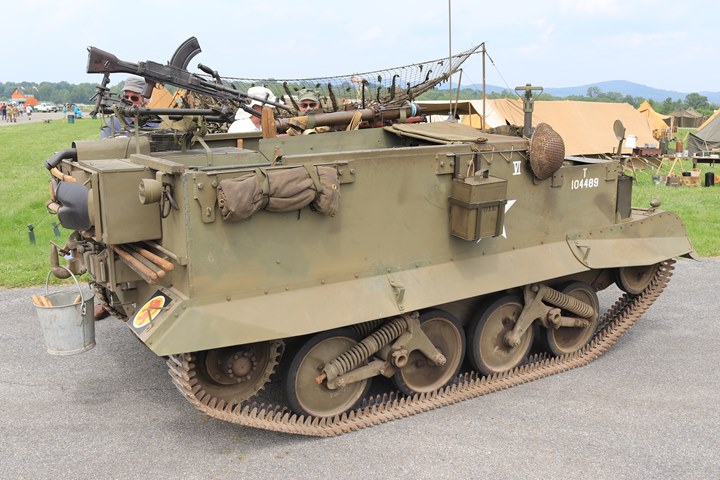
Author's photo added 6-22-2018.
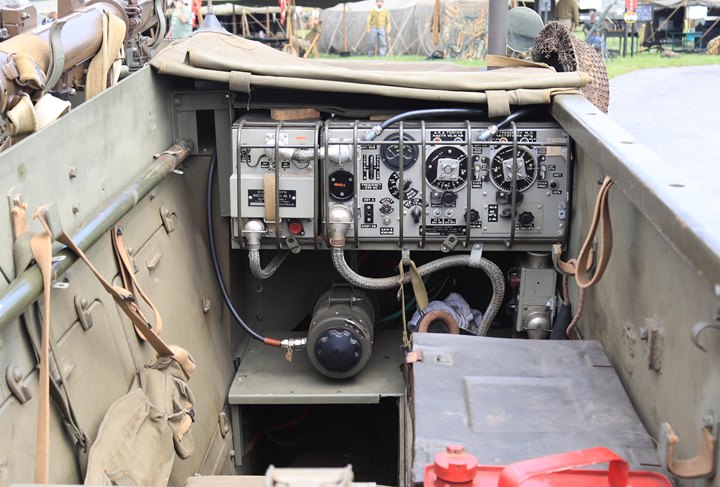
This is the best restoration of the radio
equipment on a Universal Carrier that I have found. Author's photo
added 6-22-2018.
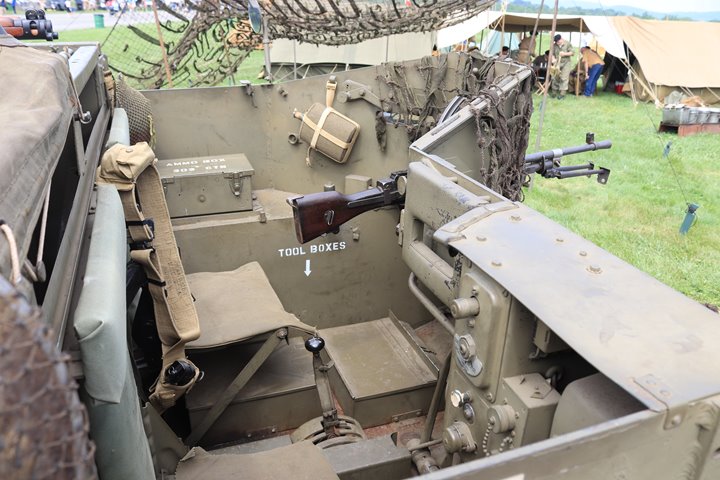
The Author's photo added 6-22-2018.
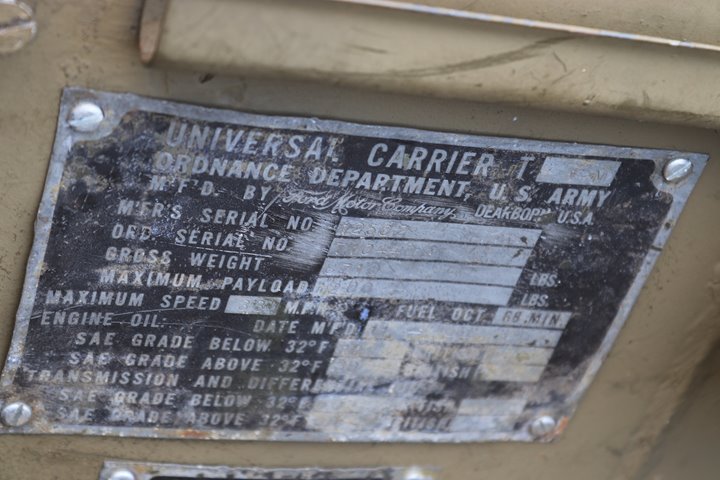
This Universal Carrier is Ford serial number
12502, Ordnance Department serial number T 10448-9 , and was built
in November 1944. Author's photo added 6-22-2018.
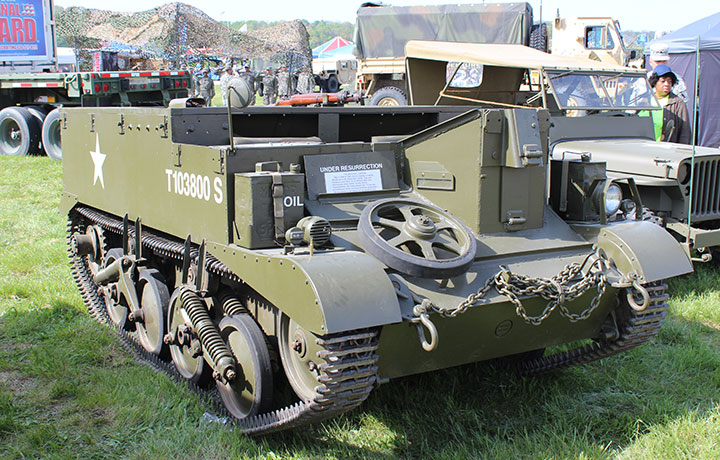
This Canadian Ford built Universal Carrier
from the Second World War was photographed at the 2014 Spirit of St.
Louis Air Show. Author's Photo.
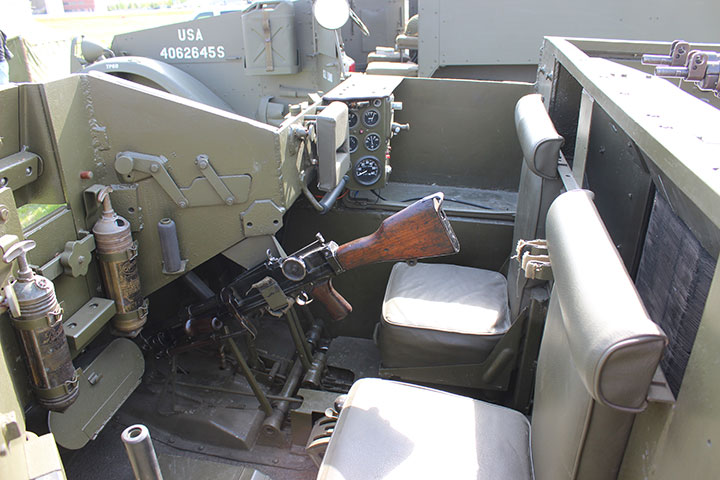
Author's Photo.
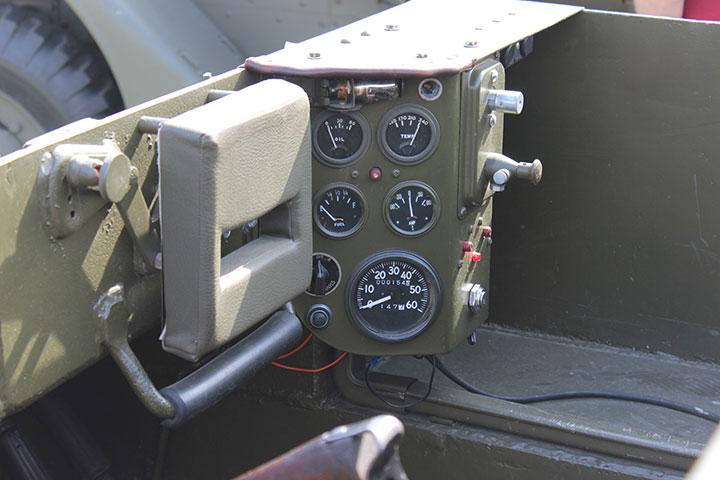
Author's Photo.
Ford Canada:
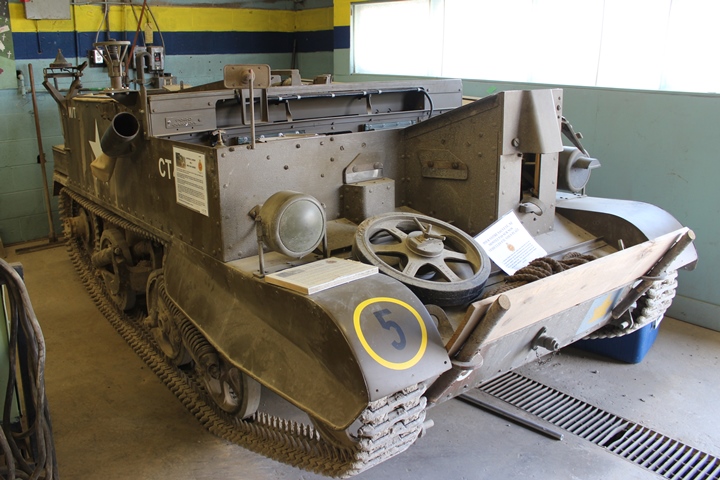
This is one of 33,988 Universal Carriers
built by Ford at its Windsor, ONT plant. Author's photo added
2-11-2022.
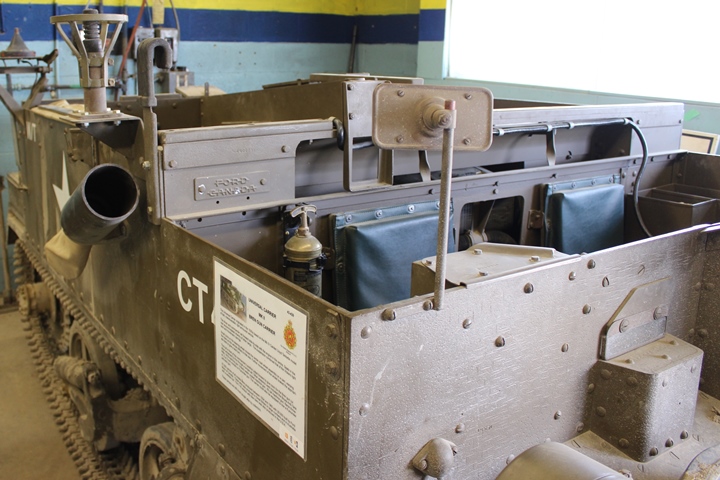
"Ford Canada" is on a nameplate behind the
driver's location. Author's photo added 2-11-2022.
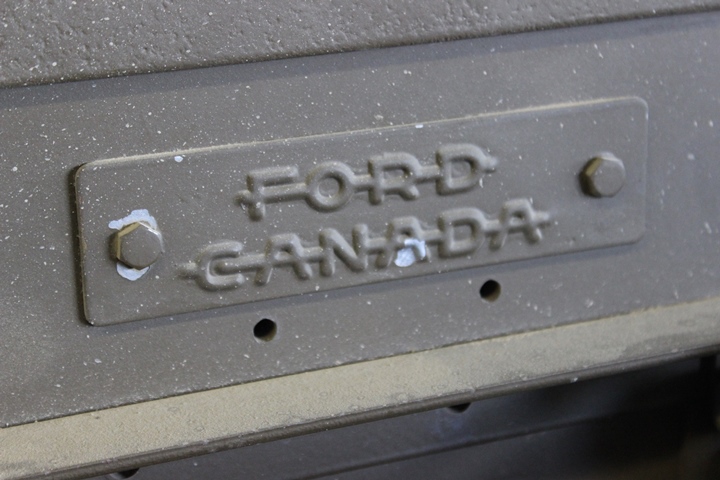
Author's photo added 2-11-2022.
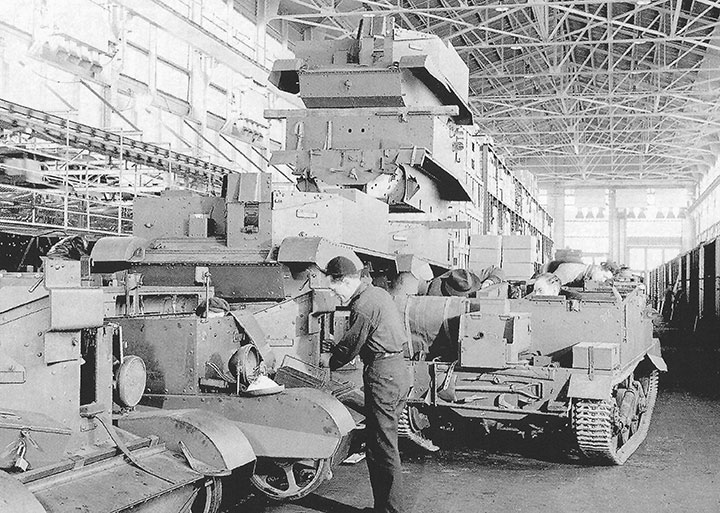
This World War Two photo shows several of the 33,988
Universal Carriers on the railroad dock at the Windsor, ONT Ford plant.
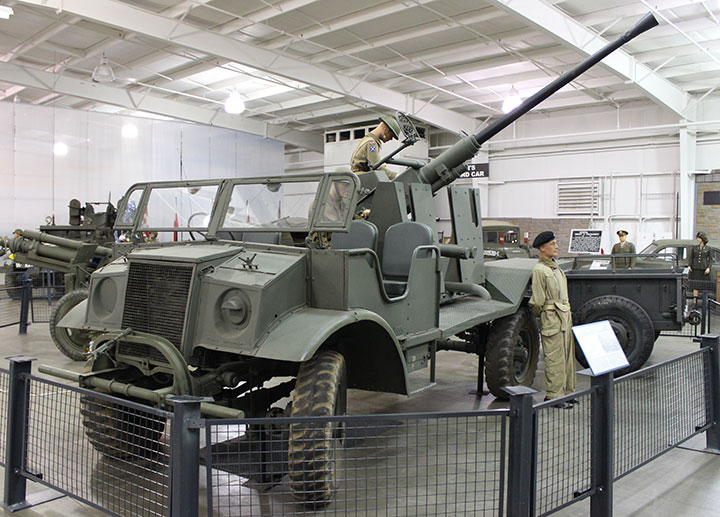
This is one of 209,000 Canadian Military
Pattern Trucks built by Ford of Canada and was photographed at the
National Military History Center in Auburn, IN. Author's photo.
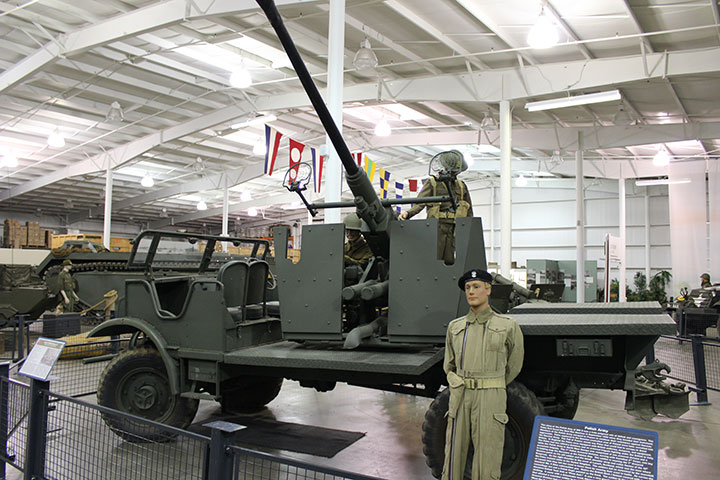
This version carries a single Bofors
anti-aircraft gun. Both Chrysler and Pontiac made the 40mm weapon
during World War Two. For this version built in Canada, the 40mm
Bofors was built by Otis - Fensom Elevator, Ltd. in Hamilton, ONT.
The company modified the Bofors for use on the Ford truck. Author's
photo.
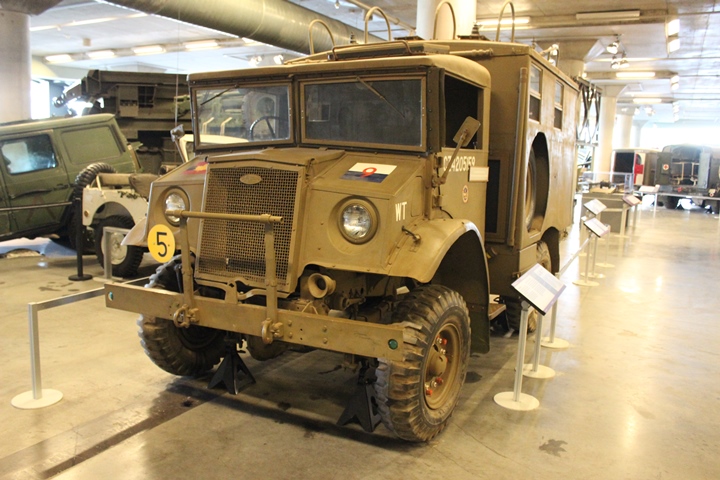
This Ford of Canada F15A wireless truck is on display at the Canadian
War Museum in Ottawa, ONT.
Author's photo added 2-11-2022.
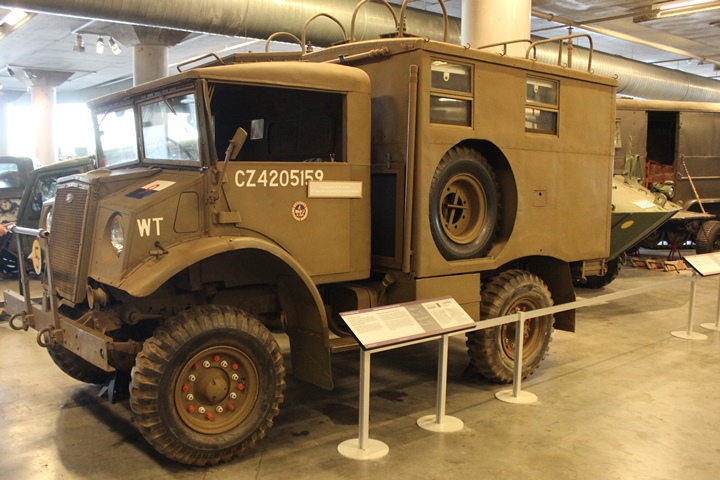
Author's photo added 2-11-2022.
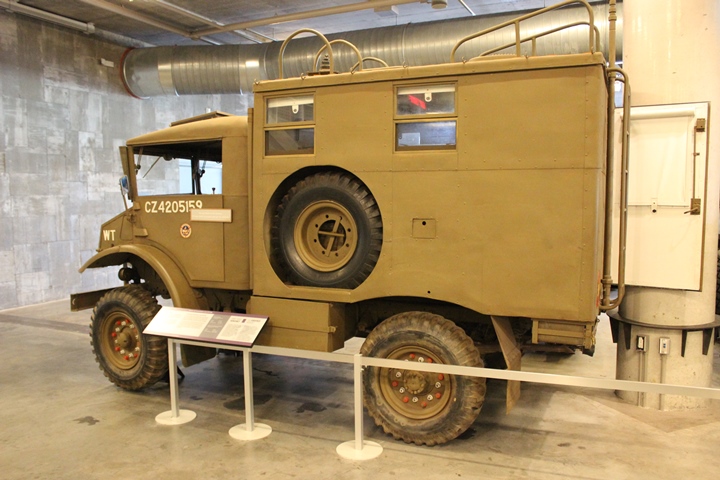
Author's photo added 2-11-2022.

This Ford of Canada CMPT truck is also on
display at the Canadian War Museum. Author's photo added 2-11-2022.
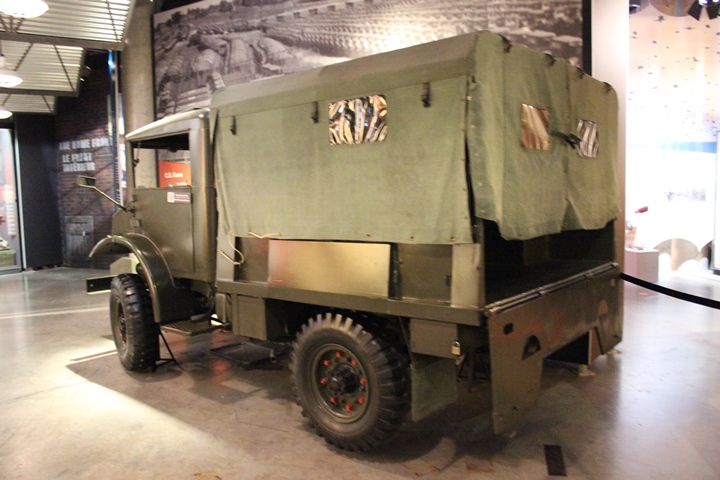
Author's photo added 2-11-2022.
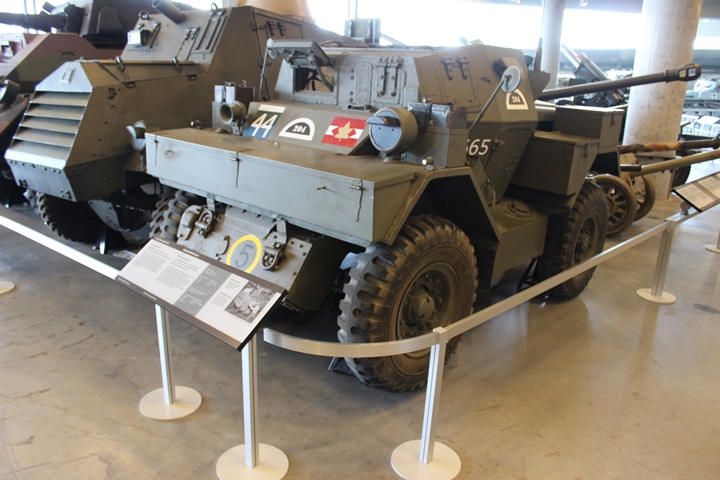
Ford of Canada produced 3,200 Lynx armored
cars for the war effort. The Lynx was the Canadian version of the
British Dingo short range scout car. This one is on display at the
Canadian War Museum. Author's photo added 2-11-2022.
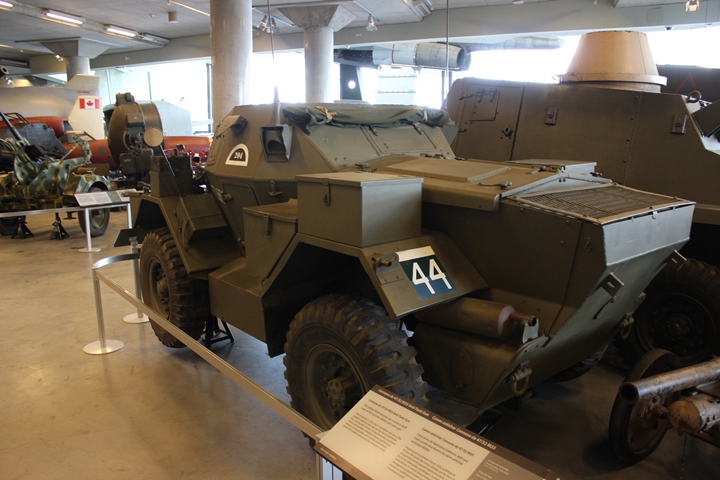
Author's photo added 2-11-2022.
Ford-Built Aircraft and Related Items:
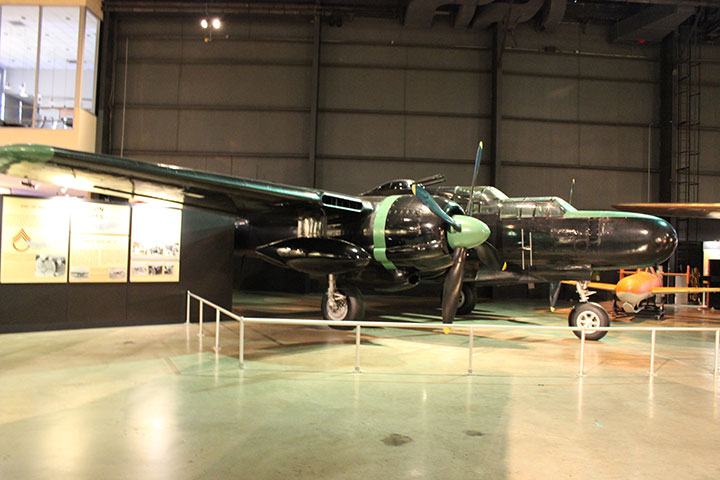
A Northrop P-61 "Black Widow" at the National Museum of the Air Force.
Ford built 17,008 drop tanks like the one seen here for the P-38, P-47,
and P-61 during World War Two. Author's Photo added 9-1-2014.
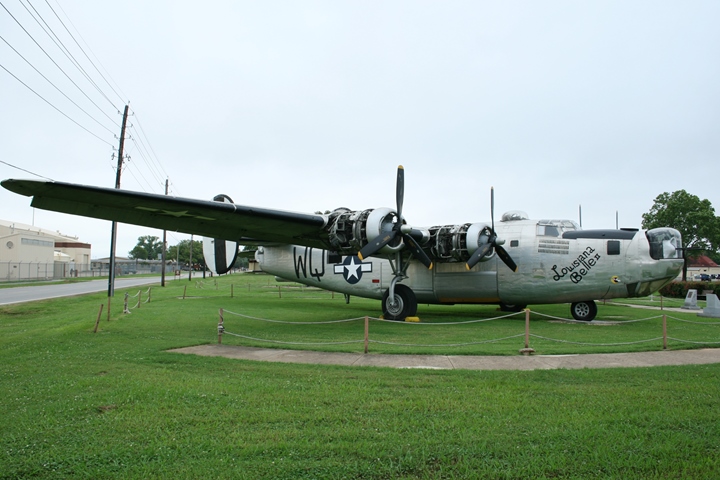
Ford is best remembered, especially among
the aviation historians, for its contribution to the war effort for building
6,790 Consolidated B-24 Liberator four engine bombers in a huge, brand
new plant in Willow Run, MI. This was quite an endeavor and not
without a lot of pain and controversy. Once the plant got up to line
speed, it was producing one bomber an hour, like this Ford-built B-24J on display at the Barksdale Global Power Museum
at Barksdale AFB in Bossier City, LA. Not only was the Willow Run
Plant making parts for the bombers it was building, but it also built
1,894 Knock Down B-24s that were then shipped by truck to the Douglas
Plant in Tulsa, OK and the Consolidated Plant in Fort Worth, TX for
final assembly. The Willow Run Plant was one of five in the US during
World War Two that in total produced 18,140 B-24s, making it the
most produced aircraft in this country during the war. Author's Photo.
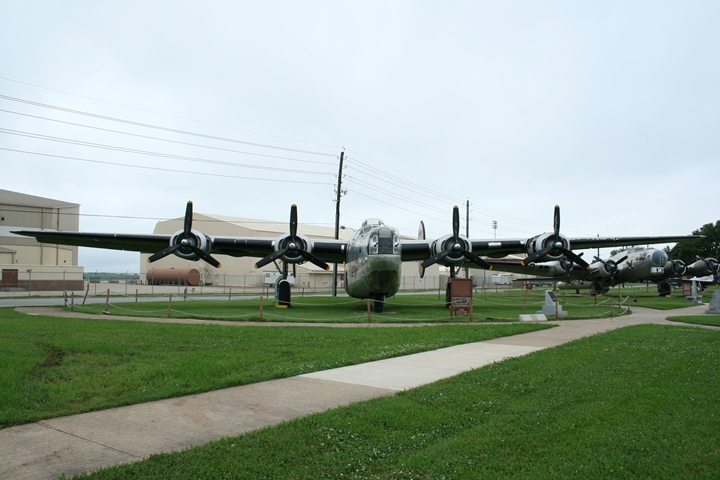
Author's Photo.
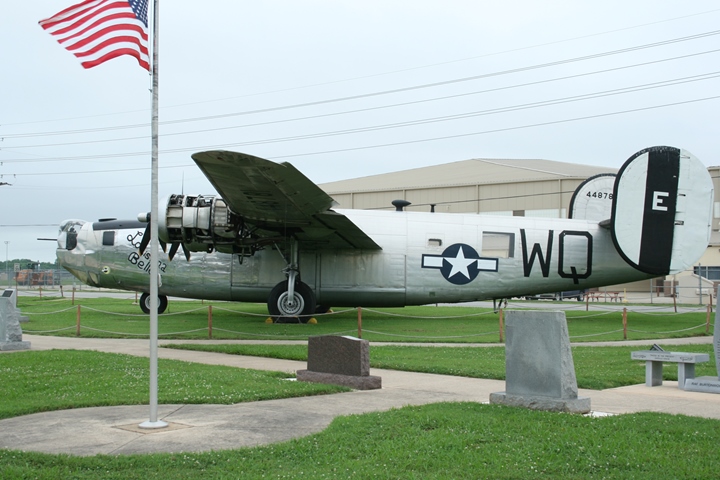
This is one of four B-24s built at the Ford
Willow Run plant that are on display. It is the only one on
display in the United States. One is in Canada and two are in the
United Kingdom. Author's Photo.
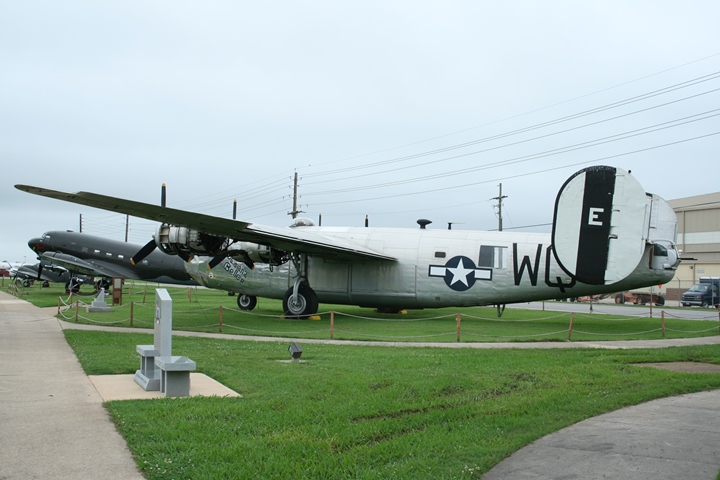
Author's Photo.
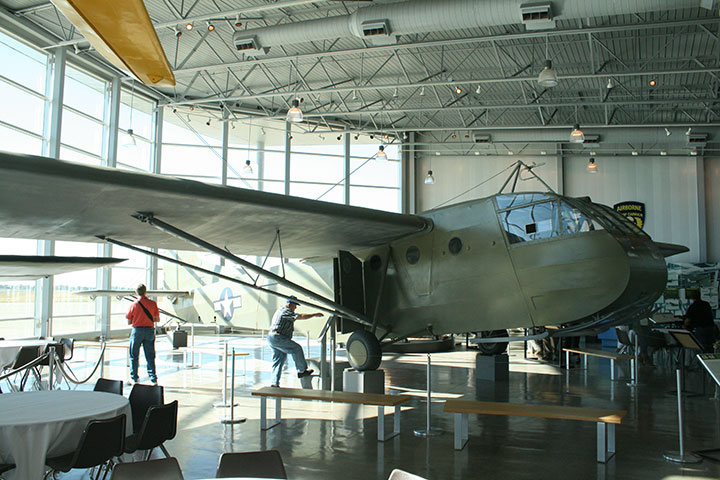
This is a Waco CG-4A Combat Glider that is
on display at the Silent Wings Museum in Lubbock, TX. Ford built
4,190 of these combat gliders at its Iron Mountain Plant in the Upper
Peninsula of Michigan. Ford was one of 17 companies that built a
total 13,903 CG-4As under license for the US Army Airborne Troop Carrier
Command and was the largest producer of this type of glider. Author's Photo.
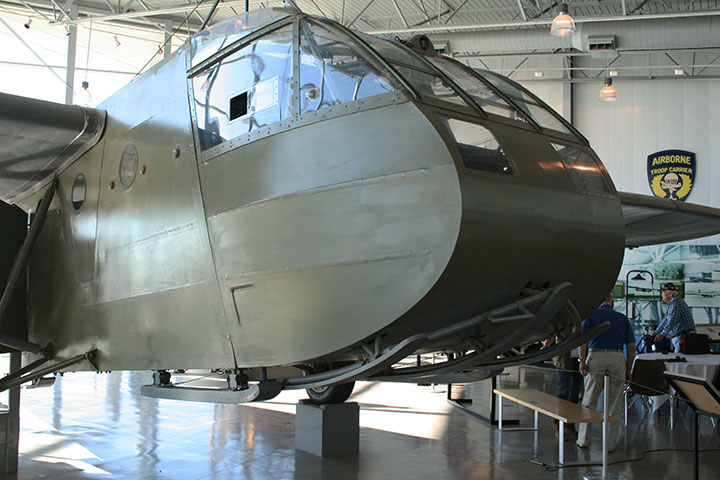
This photo shows both the landing skids
and landing wheel. Author's Photo.
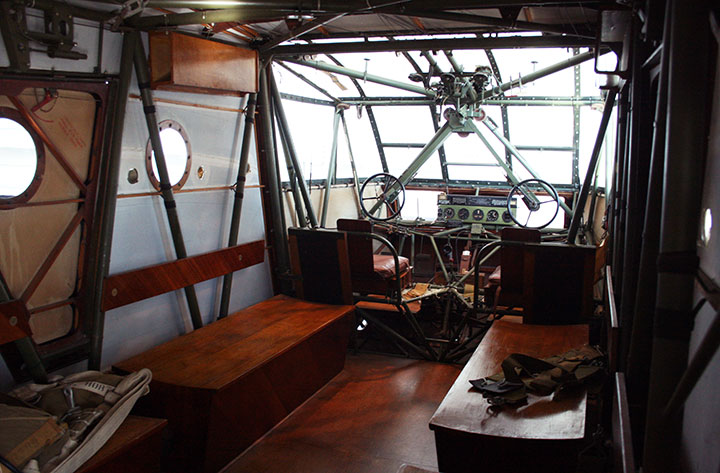
From inside, it is evident that the glider
is built with steel tubing wrapped by aircraft fabric and wood for
supports, benches, and the floor. Ford's Iron Mountain facility was
ideally suited for this task, as it had originally made wooden bodies
for the Model T. Author's Photo.
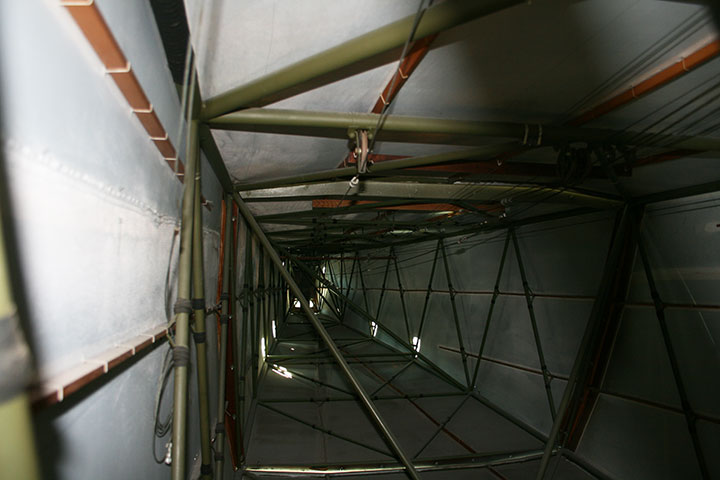
This photo shows the interior of the rear of
the CG-4A. More steel tubing, fabric, and wood. Author's Photo.
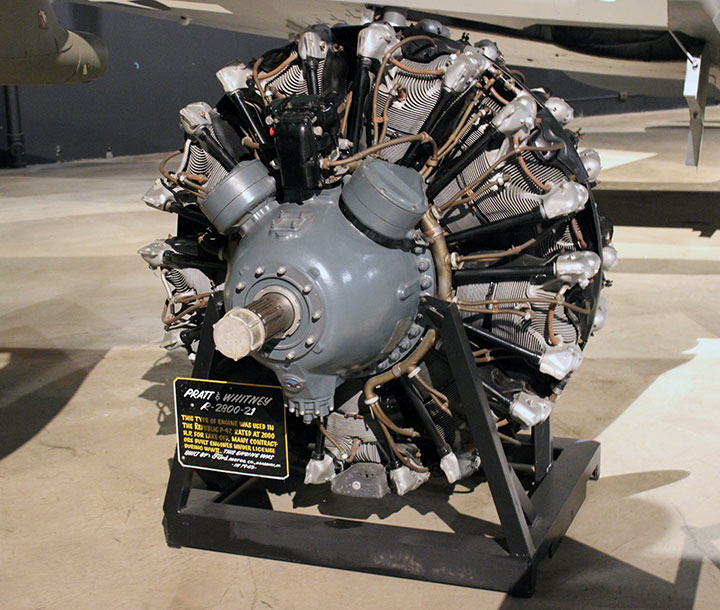
Ford Motor Company built 56,870 Pratt
& Whitney R-2800 Radial Aircraft Engines like this during the war, at a
new plant at the River Rouge. The Ford built R-2800 found
application on the Curtiss C-46, Douglas A-26, Martin B-26,
Northrop P-61, Republic P-47 and the Lockheed B-34. This is an
actual Ford-built R-2800-21 engine, on display at the Museum of the
United States Air Force. Author's Photo.
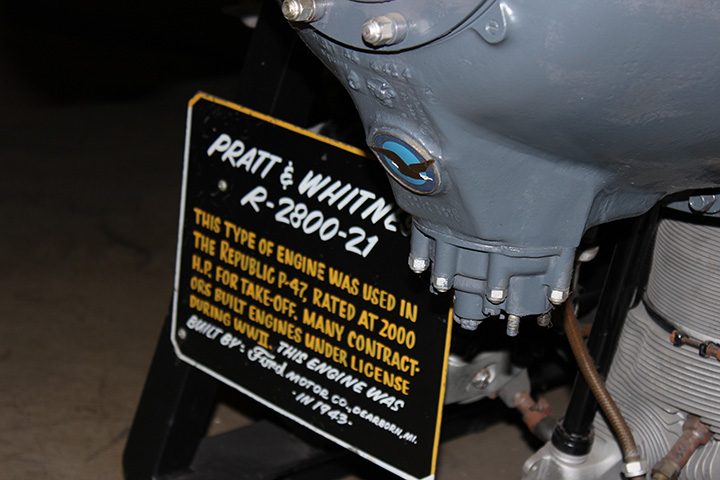
Ford built 4,671 R-2800-21 radial aircraft
engines to power the P-47 Thunderbolt. Author's Photo.
|
Ford-Built Pratt & Whitney
R-2800 Engines |
|
R-2800 Model |
Number of Engines Built |
Aircraft Type |
|
R-2800-5 |
954 |
B-23, B-26A,B |
| R-2800-21 |
4,671 |
Various P-47 |
| R-2800-27 |
262 |
JD-1, B-23,
A-26., F7F-1N |
| R-2800-31 |
6,088 |
PV-1, PV-2,
Rb-34A,B |
| R-2800-43 |
12,559 |
C-46, B-26 |
| R-2800-51 |
5,152 |
R5C, C-46 |
|
R-2800-59 |
10,799 |
P-47C, D, L |
|
R-2800-71 |
1,726 |
Douglas JD-1, A-26B, C |
|
R-2800-75 |
8,042 |
C-46 |
|
R-2800-79 |
6,617 |
Douglas JD-1, A-26B |
| Total |
56,870 |
|
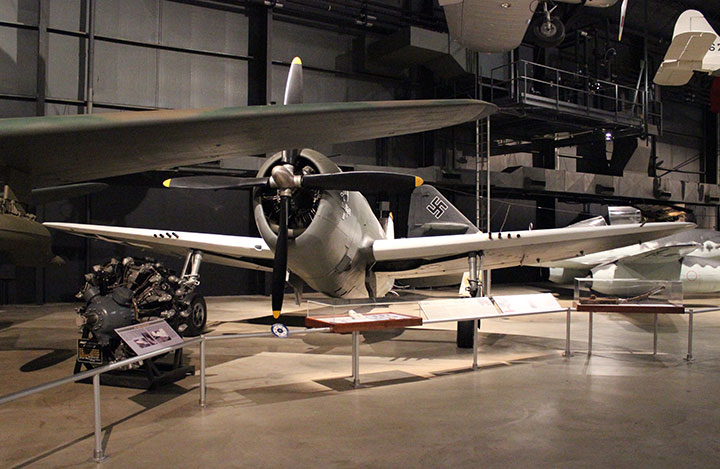
The Ford-built R-2800 can be
see next to one of the P-47s on display at the National Museum of the US
Air Force. Author's Photo.
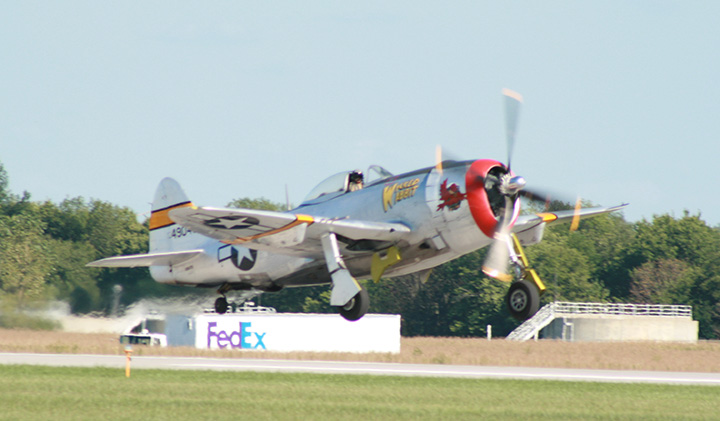
A Republic P-47. Author's Photo.
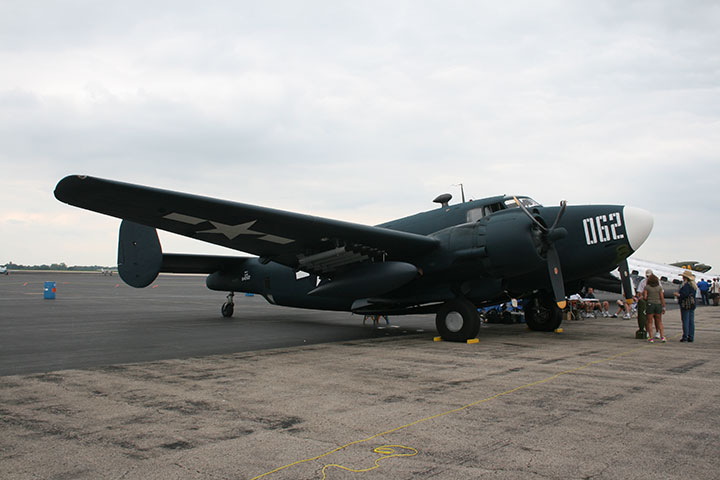
This Lockheed PV-2D Harpoon photographed at
the 2013 Gathering of Warbirds and Legends still has its Ford-built
R-2800-31 engines in it. Author's Photo.
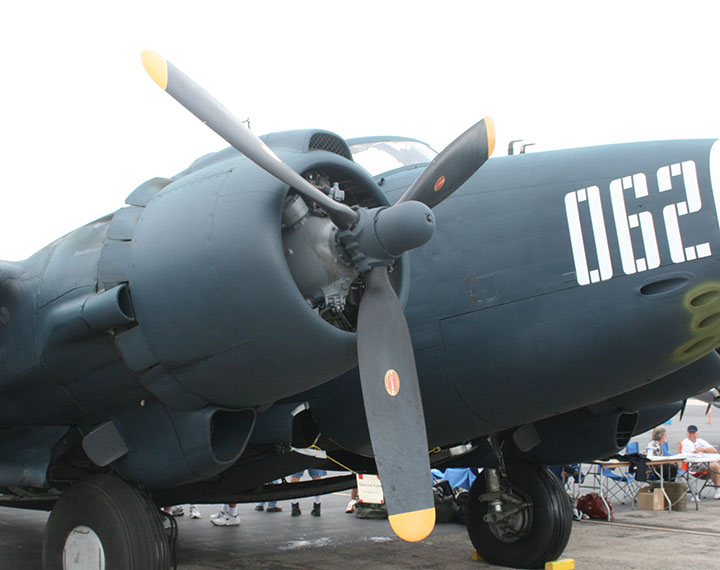
Author's Photo.
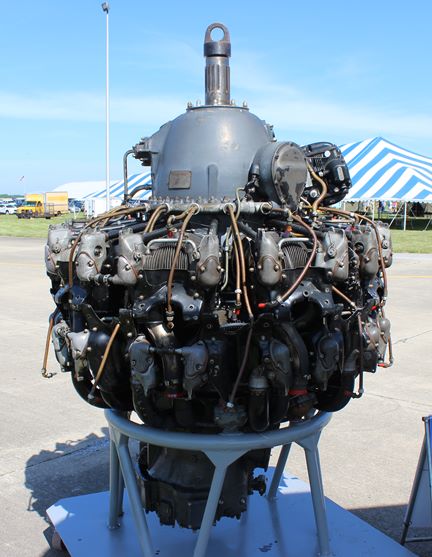
This Ford-built R-2800-31 was seen at the
2016 Warbird Expo at the Indianapolis Regional Airport. Author's
photo added 11-13-2016.
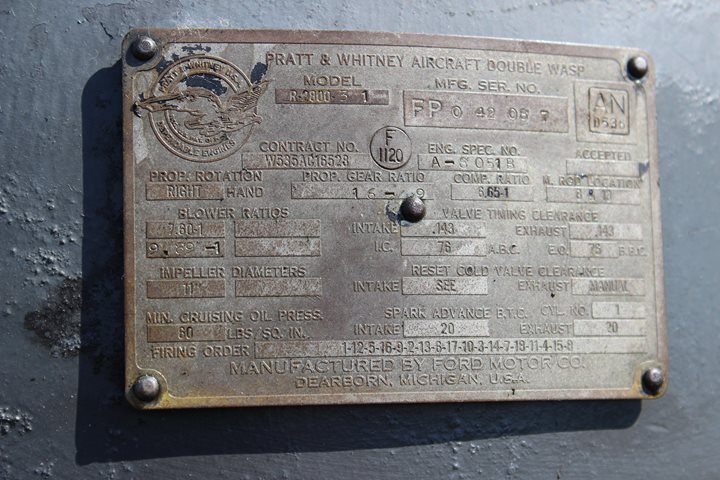
The ID tag shows the engine has a serial
number of FP-0-42-08-7. Author's photo added 11-13-2016.
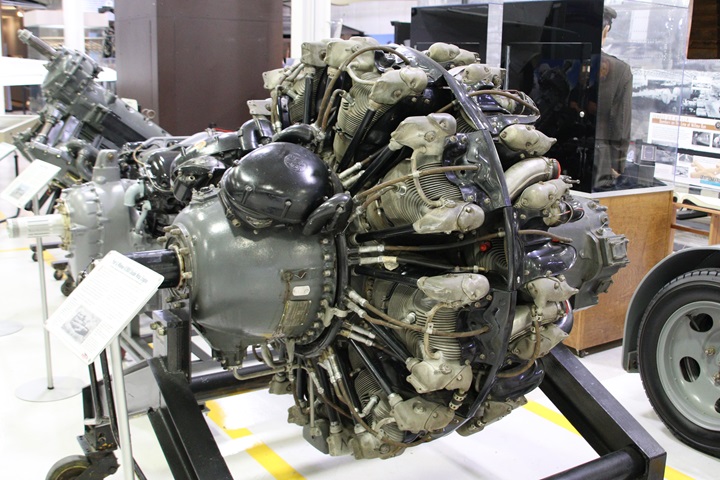
This Ford-built R-2800 is on display at the
Yankee Air Museum in Bellevue, MI. This engine is 22 miles from
where it was built. Author's photo added 5-17-2021.
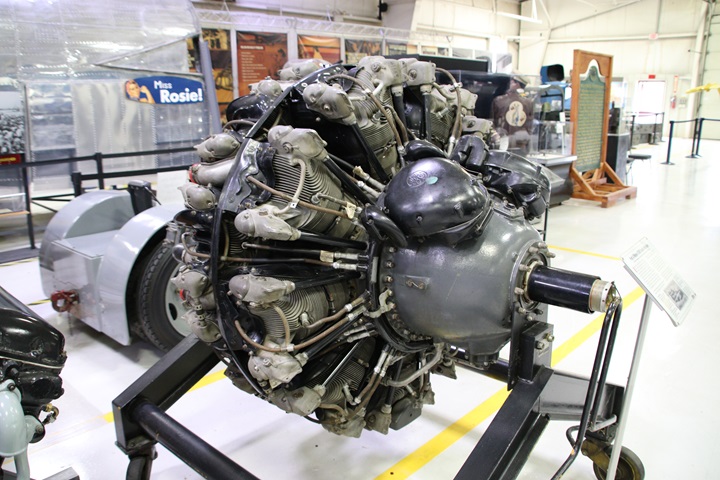
Author's photo added 5-17-2021.
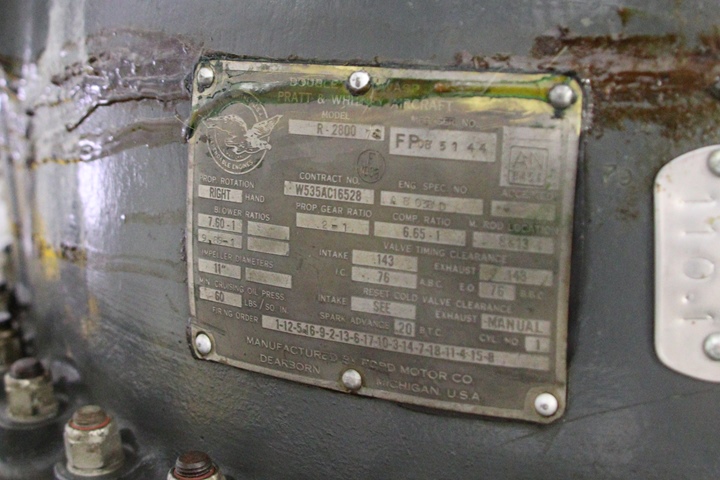
This engine is serial number FP-08-51-44.
This is either an R-2800-71, 75, or 79 engine, as it is not possible to
identify the last digit. Author's photo added 5-17-2021.
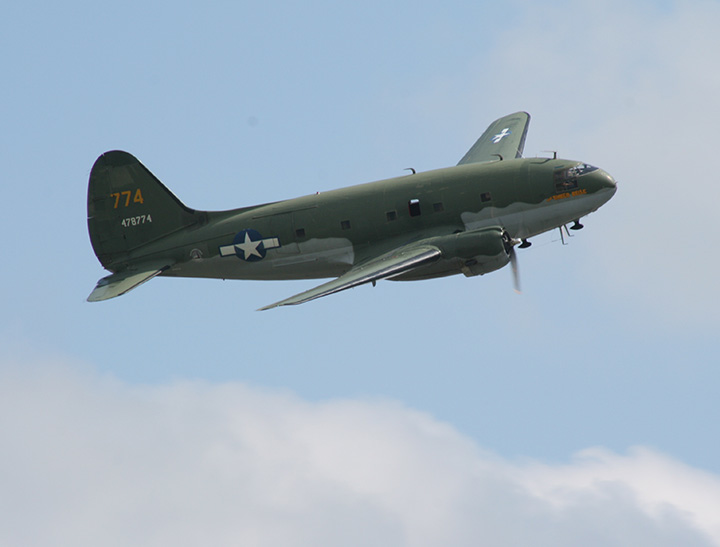
Ford was the exclusive manufacturer of the R-2800-51
engines that powered the
Curtiss C-46 Commando. Author's Photo.
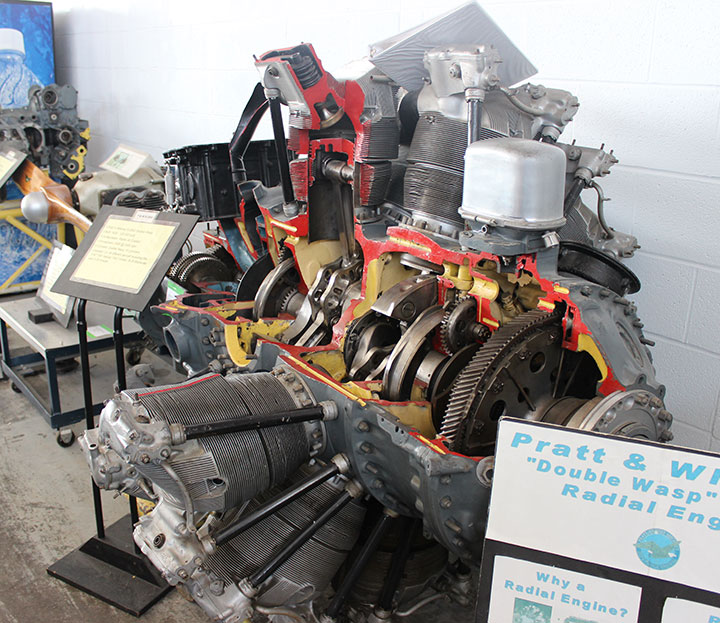
This cutaway on display at MAPS Museum is a
Ford-built R-2800-51 that powered the C-46 Commando as seen above.
Author's Photo added 5-6-2015.
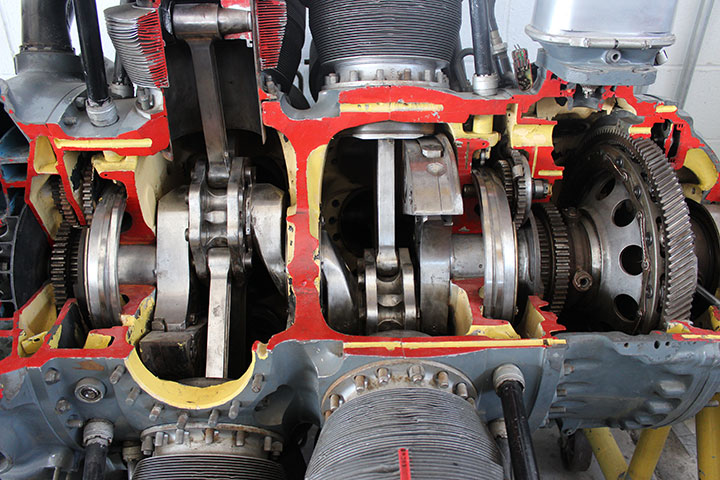
Author's Photo added 5-6-2015.
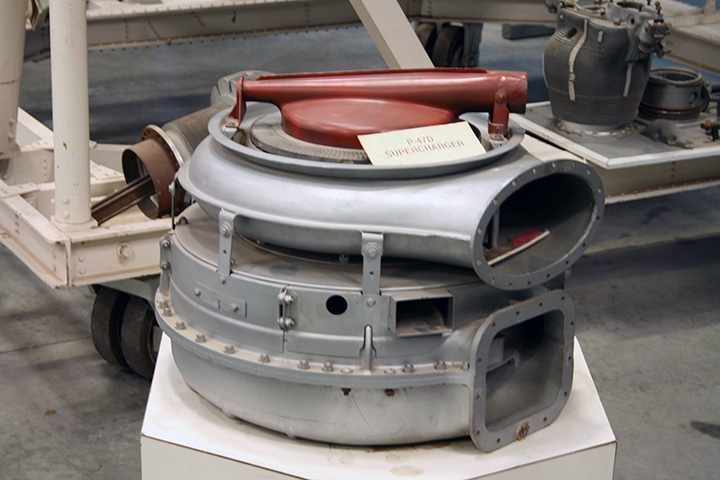
This is a General Electric turbo supercharger used on a Republic P-47
during World War Two. Ford Motor Company built 52,276 of similiar General
Electric turbo superchargers
at its River Rouge plant. These were used on B-17s and B-24s. Author's Photo.
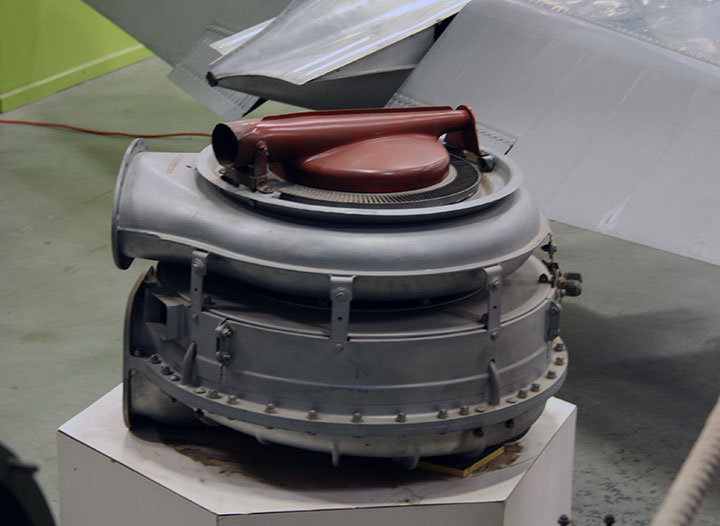
Author's Photo.
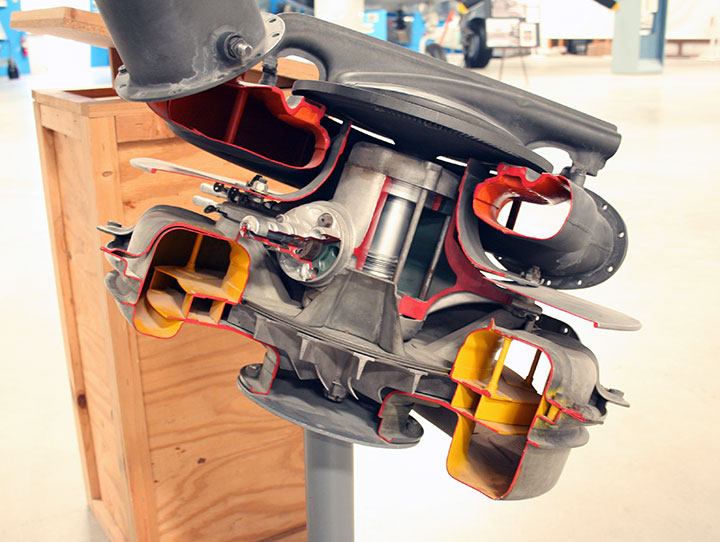
This cut-away of a turbo supercharger shows some of the internal parts. Author's Photo.

Author's Photo.
B-24 Nose Section Photos from the
Mighty Eighth Air Force Museum:
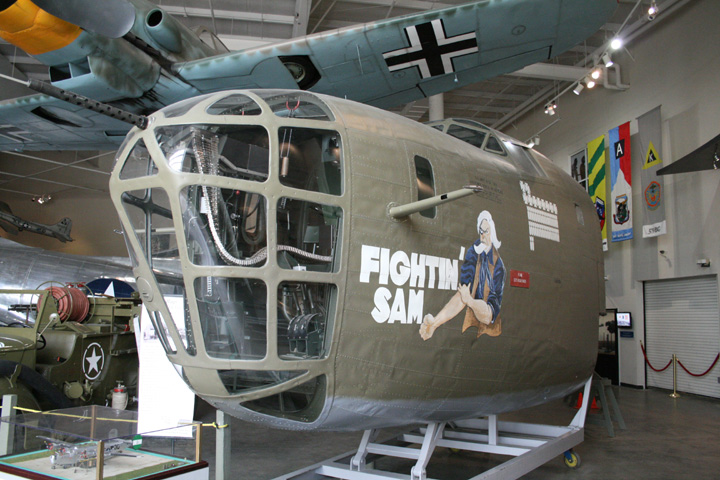
This Ford-built nose section is on display at the Mighty Eighth Air
Force Museum in Poole, GA. More photos of this nose section can be
seen at the bottom of this page. Author's Photo.
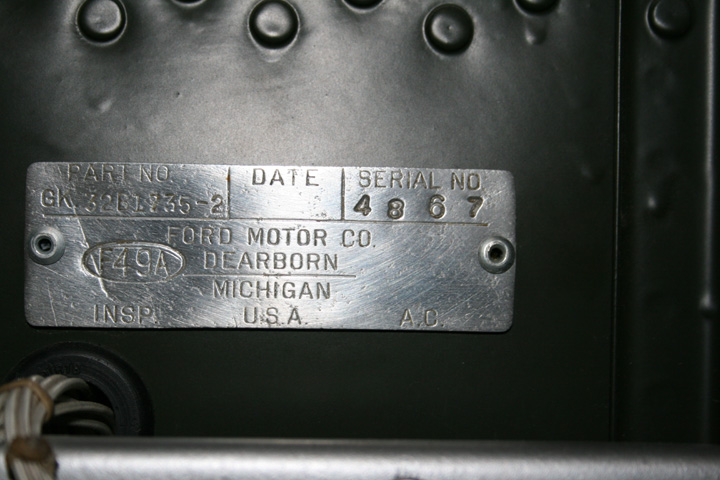
Author's Photo.
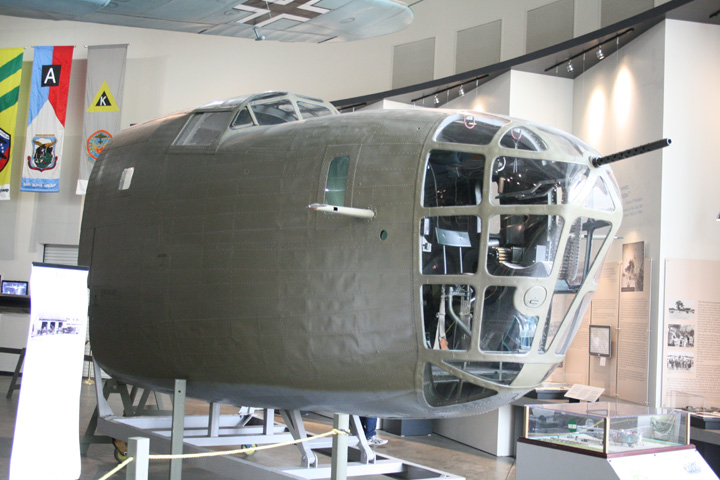
Author's Photo.
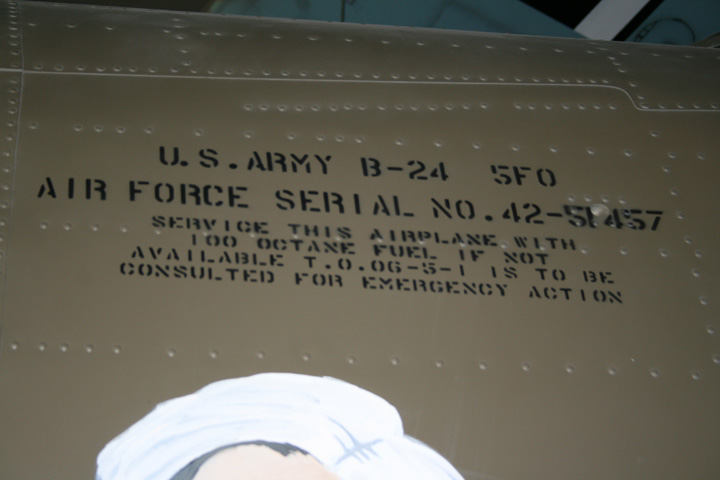
Author's Photo.
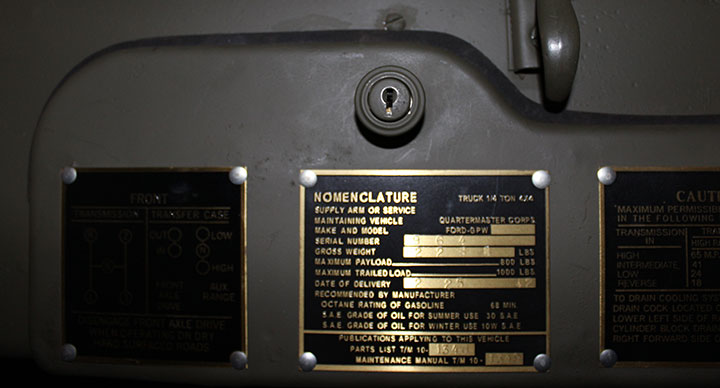
It was delivered 2-25-1942. Author's Photo.
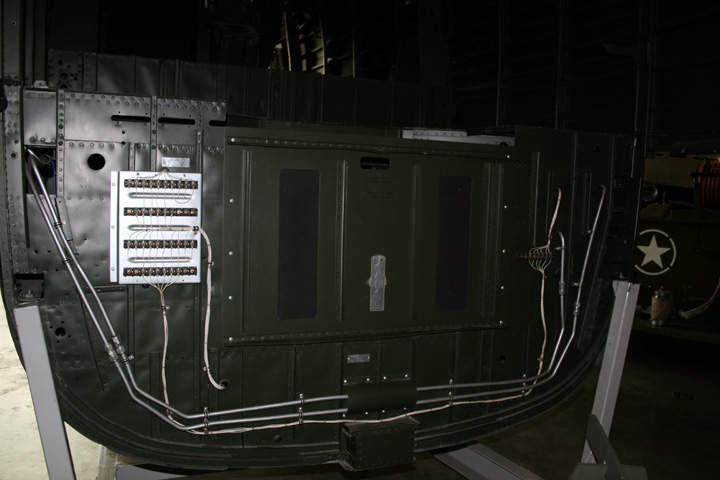
Author's Photo.
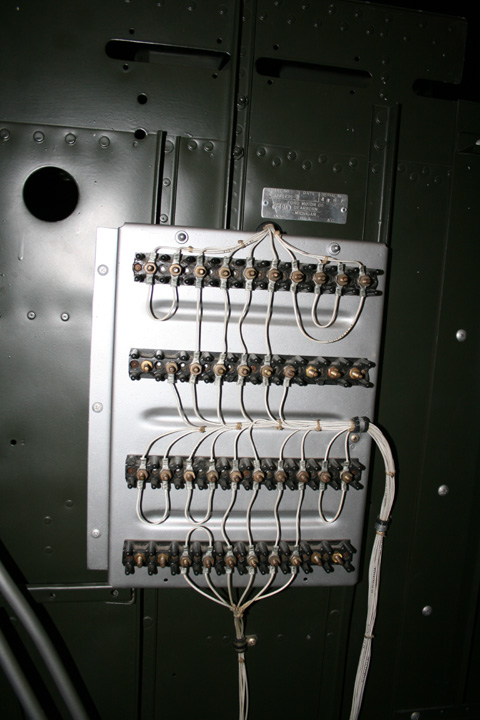
Author's Photo.
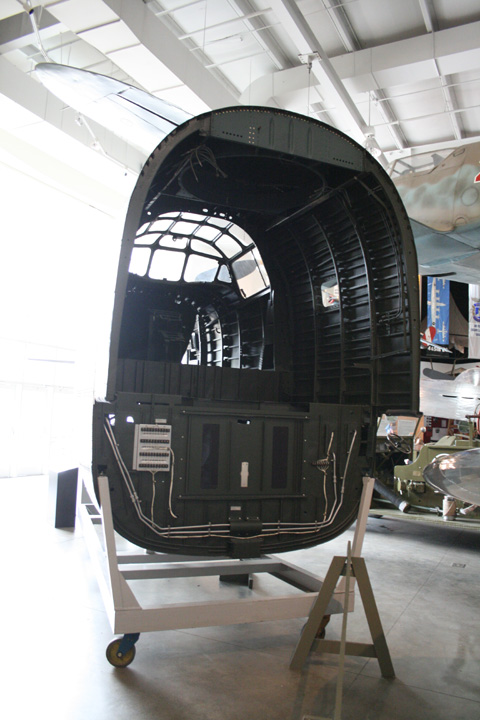
Author's Photo.
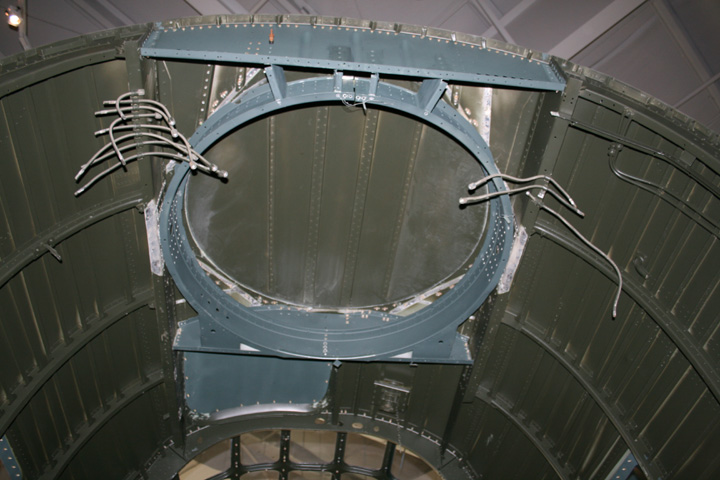
Author's Photo.
Miscellaneous Ford built items:
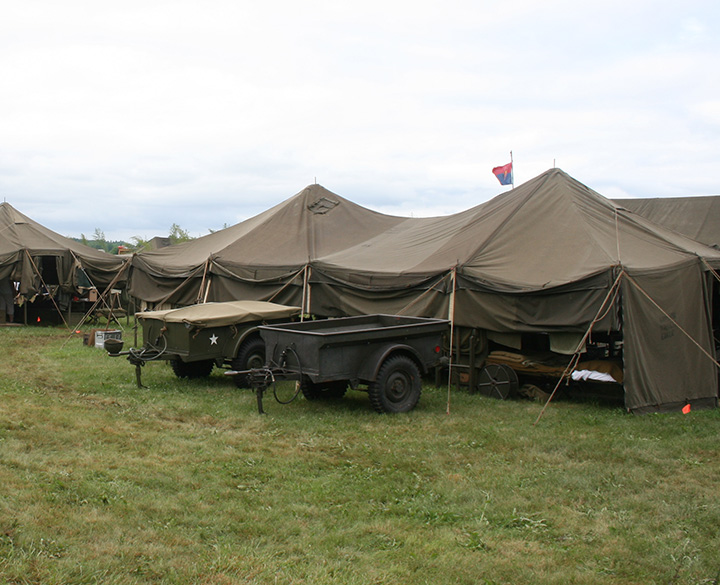
High tech to low tech, Ford delivered to the
US Military. Squad tents like this one were very important to the
common service person, as the tentss protected them from the elements.
One would not think an automobile manufacturer would have the expertise
to make something like this. In today's world, they don't.
The seats and interior trim are now outsourced . But in the World
War Two era, Ford and other companies made their own seats and
sewed their own upholstery. The Ford Highland Park Trim
Department made 9,498 tents like this to protect the GIs from rain,
snow, and the cold. Author's Photo.
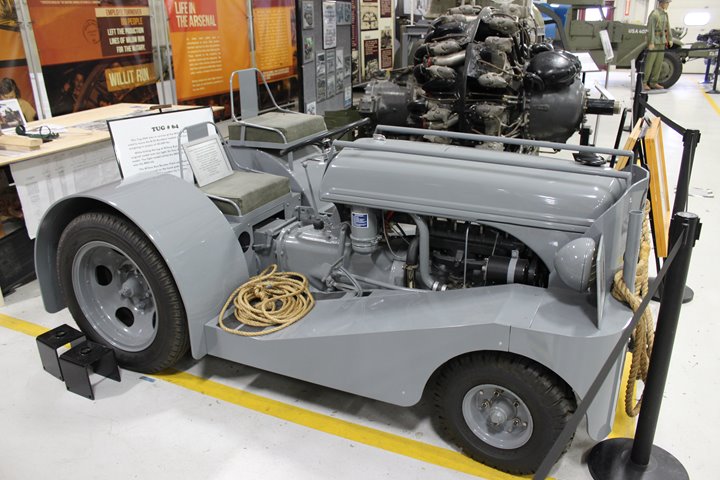
This Ford Moto-Tug can be seen at the Yankee
Air Museum. This particular one was used to pull aircraft off the
end of the assembly line at the Ford B-24 plant. Ford records are
unclear whether 10,877 Moto-Tubs were outsourced or built in-house by
Ford. Author's Photo added 2-16-2017.
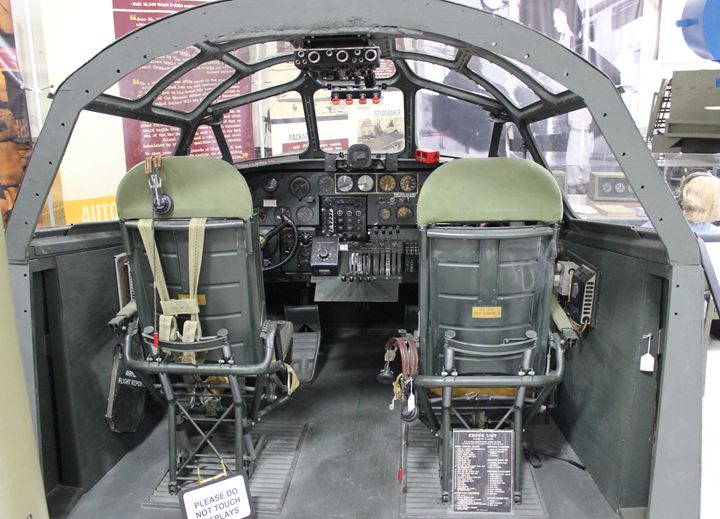
Also at the Yankee Air Museum is this Ford built B-24L cockpit.
Author's Photo added 2-16-2017.
|































































































































































